
- Find A School
- Certifications
- North U Sail Trim
- Inside Sailing with Peter Isler
- Docking Made Easy
- Study Quizzes
- Bite-sized Lessons
- Fun Quizzes
- Sailing Challenge
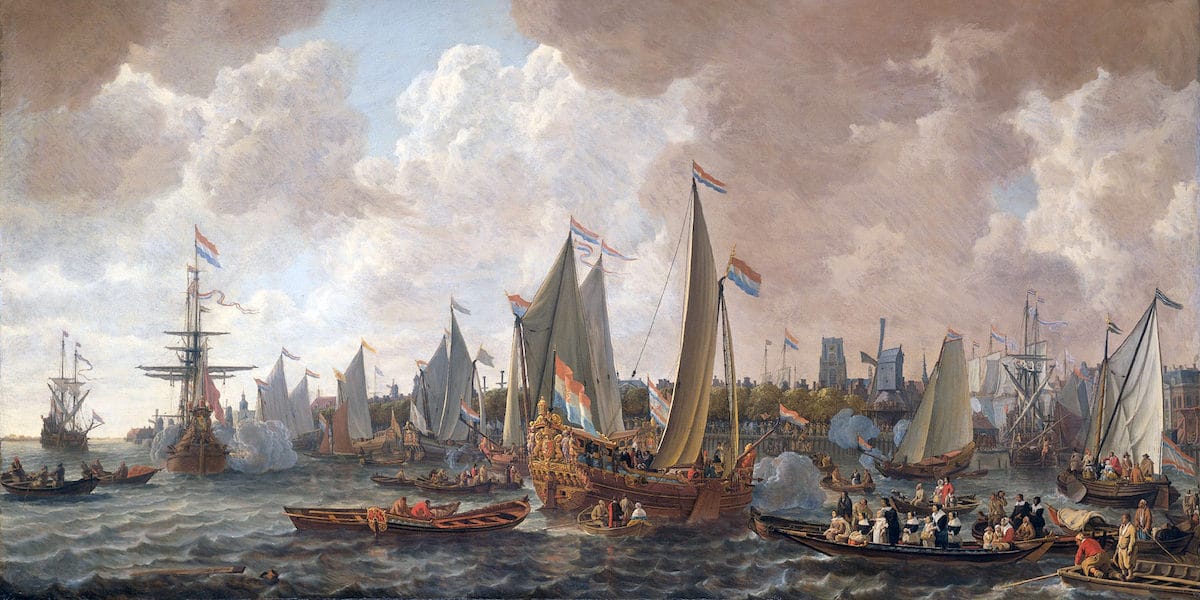

History of the Yacht
By: American Sailing Sailing History
When does a boat become a yacht? One answer has always been, you can tell a yacht when you see one. But, It really has nothing to do with size of the boat, weight of the boat, its style, sleeping quarters, heads, tillers, or a wheel. A yacht is a boat that was designed for the express pleasure of its owner.
The yacht is an invention of the 14th century Dutch. The Dutch used small, fast boats for chasing smugglers, pirates and criminals. Rich ship owners and merchants began using these small “ jaghts ” to sail out to celebrate their returning merchant ships. It quickly became chic to use these “ jaghts ” to take friends out just for pleasure.

“ Mary ” was presented to King Charles II by the Dutch in 1660.
Charles II of England spent 10 years in exile in Holland before he was returned to the English throne in 1660. His return to the throne was celebrated by the city of Amsterdam, presenting him with a luxurious 60’ yacht including a crew of 20. Her name was Mary. He took great pleasure in sailing her up and down the Thames. He studied navigation and even naval architecture and he built approximately 20 yachts during his lifetime. It can be said that he was the world’s first yachtsman. His enthusiasm for yachting was contagious and his brother James, Duke of York, joined him and also became an avid yachtsman as well.
As always when there are two sailboats on the water a race ensues. Soon the first organized regatta was planned as a 40-mile race on the Thames. It took place in 1661 between Katherine , Charles’s newly constructed yacht and Anne , the Duke of York’s new yacht with Charles himself at the helm Katherine won and a new sport was born.
Yachting stayed the Sport of Kings for over a century, but by the 1800s yachting had grown to included participants of more than just the crown heads of Europe. The worlds wealthiest had joined in. Yacht Clubs were forming. The first yacht club in the world, called the Cork Water Club , was established in Ireland in 1720, followed the Lough Ree Yacht Club in 1770 (again in Ireland), and the Starcross Yacht Club in 1772 in England.

Cowes Castle became the headquarters of the Royal Yacht Squadron around 1858.
Probably the most famous of all the English yacht clubs the The Royal Yacht Squadron was founded on June 1, 1815 in the Thatched House Tavern in St James’s, London as The Yacht Club by 42 gentlemen interested in yachting.
Across the pond the New York Yacht Club (NYYC) was started on July 30, 1844 when John Cox Stevens invited eight friends to his yacht Gimcrack , anchored in New York Harbor. They formed a syndicate to build a yacht with the intention of taking her to England and making some money competing in yachting regattas and match races. They choose to build a Pilot style Schooner to represent the club; at the time there was no faster design!
Pilot Schooners would lie at anchor in the inner harbor of New York City and wait for the behmoth square rigged Clippers carrying goods between America and Europe. The Pilot Boats purpose was to guide the huge square riggers that would appear at the entrance to New York Harbor’s Verazno Straights, to a berth in the City. The Schooners had to be fast to make a living. First one to the cargo ship got the job second got nothing.
The syndicate contracted with master schooner designer George Steers for a 101 ft (30.78 m) schooner which was christened America and launched on the 3 of May 1851. America crossed the Atlantic on her own bottom that year and challenged all of England’s fastest yachts to a match race. No yachts were willing to race her. Finally, America joined a free-for-all on Friday, August 22, around the Isle of Wight, racing against 15 yachts of the Royal Yacht Squadron in the club’s annual 53-nautical-mile (98 km) race around the Isle of Wight. Finishing 8 minutes ahead of its closest rival. America had won the Royal Yacht Squadron’s “ Hundred Guinea Cup “, later called the America’s Cup in honor of the yacht that won it.

The Yacht America
Watching the race was Queen Victoria, who supposedly inquired, “ Which is first? ” Told it was America , she asked, “ Which is second? ” “ Ah, Your Majesty, there is no second, ” was the reply. Or so the story goes. The NYYC defended that trophy from 1870-1983. This has been described by journalists as “ the longest winning streak in sports “.
Related Posts:

- Learn To Sail
- Mobile Apps
- Online Courses
- Upcoming Courses
- Sailor Resources
- ASA Log Book
- Bite Sized Lessons
- Knots Made Easy
- Catamaran Challenge
- Sailing Vacations
- Sailing Cruises
- Charter Resources
- International Proficiency Certificate
- Find A Charter
- All Articles
- Sailing Tips
- Sailing Terms
- Destinations
- Environmental
- Initiatives
- Instructor Resources
- Become An Instructor
- Become An ASA School
- Member / Instructor Login
- Affiliate Login

1550s, yeaghe "a light, fast-sailing ship," from Norwegian jaght or early Dutch jaght , both from Middle Low German jacht , shortened form of jachtschip "fast pirate ship," literally "ship for chasing," from jacht "chase," from jagen "to chase, hunt," from Old High German jagon , from Proto-Germanic *yago- , from PIE root *yek- (2) "to hunt" (source also of Hittite ekt- "hunting net"). Related: Yachting ; yachtsman .
Entries linking to yacht
Old English huntian "chase game" (transitive and intransitive), perhaps developed from hunta "hunter," and related to hentan "to seize," from Proto-Germanic *huntojan (source also of Gothic hinþan "to seize, capture," Old High German hunda "booty"), which is of uncertain origin.
Not the usual Germanic word for this, which is represented by Dutch jagen , German jagen (see yacht (n.)). General sense of "search diligently" (for anything) is recorded from c. 1200. Related: Hunted ; hunting . To hunt (something) up "search for until found" is from 1791. Parlor game hunt the slipper is attested from 1766.
also jaeger , "German sharpshooter," 1776, from German Jäger , literally "huntsman," from jagen "to hunt," from Old High German jagon , related to Old Frisian jagia , Dutch jagen "to hunt," Old Norse jaga "to drive, to move to and fro" (see yacht (n.)). Applied to riflemen and sharpshooters in the German and Austrian armies. Englished as yager , yaeger from 1804.
- See all related words ( 5 ) >
Trends of yacht
More to explore, share yacht.
updated on September 28, 2017
Trending words
- 1 . hosanna
- 3 . hangover
- 8 . excruciate
- 10 . tattoo
Dictionary entries near yacht
yadda-yadda
- English (English)
- 简体中文 (Chinese)
- Deutsch (German)
- Español (Spanish)
- Français (French)
- Italiano (Italian)
- 日本語 (Japanese)
- 한국어 (Korean)
- Português (Portuguese)
- 繁體中文 (Chinese)

SailingEurope Blog - Sailing, Yacht Charter and Beyond
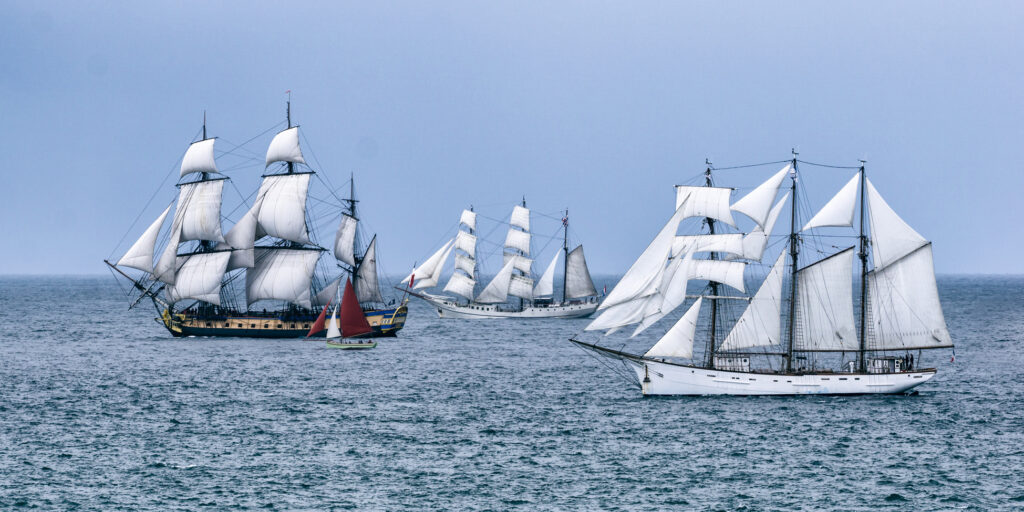
The Yacht – The Meaning and the Origin of the Word
In my language there are a few words for a floating object, or a vessel. According to the size and the purpose of the vessel, those words could be translated as “dinghy”, “yacht”, “boat” or “ship”. Some types of vessels have international names, for example “catamaran” or “hovercraft”.
What Does Yacht Mean?
However, when you say “ yacht” in my language, everyone know exactly what it is about. The word “yacht”, unlike other terms, has certain connotations. It always links with something classy, fancy, wealthy, elegant, and even glamorous.
For example, if you say that you have spent a week aboard a sailing boat , the recations of people will be more or less neutral. On the other hand, if you say that your week aboard a yacht was excellent, many people will become jealous. They will imagine you in a scene from a James Bond movie : aboard a massive white yacht in Monte Carlo , having a cold martini (shaken, not stirred)…
I wanted to share with you this language introduction because I found an interesting story about the word “yacht” and its origin. The word “yacht” became an English and an international term after an event that happened a long time ago.
How Do You Spell ‘Yacht’?
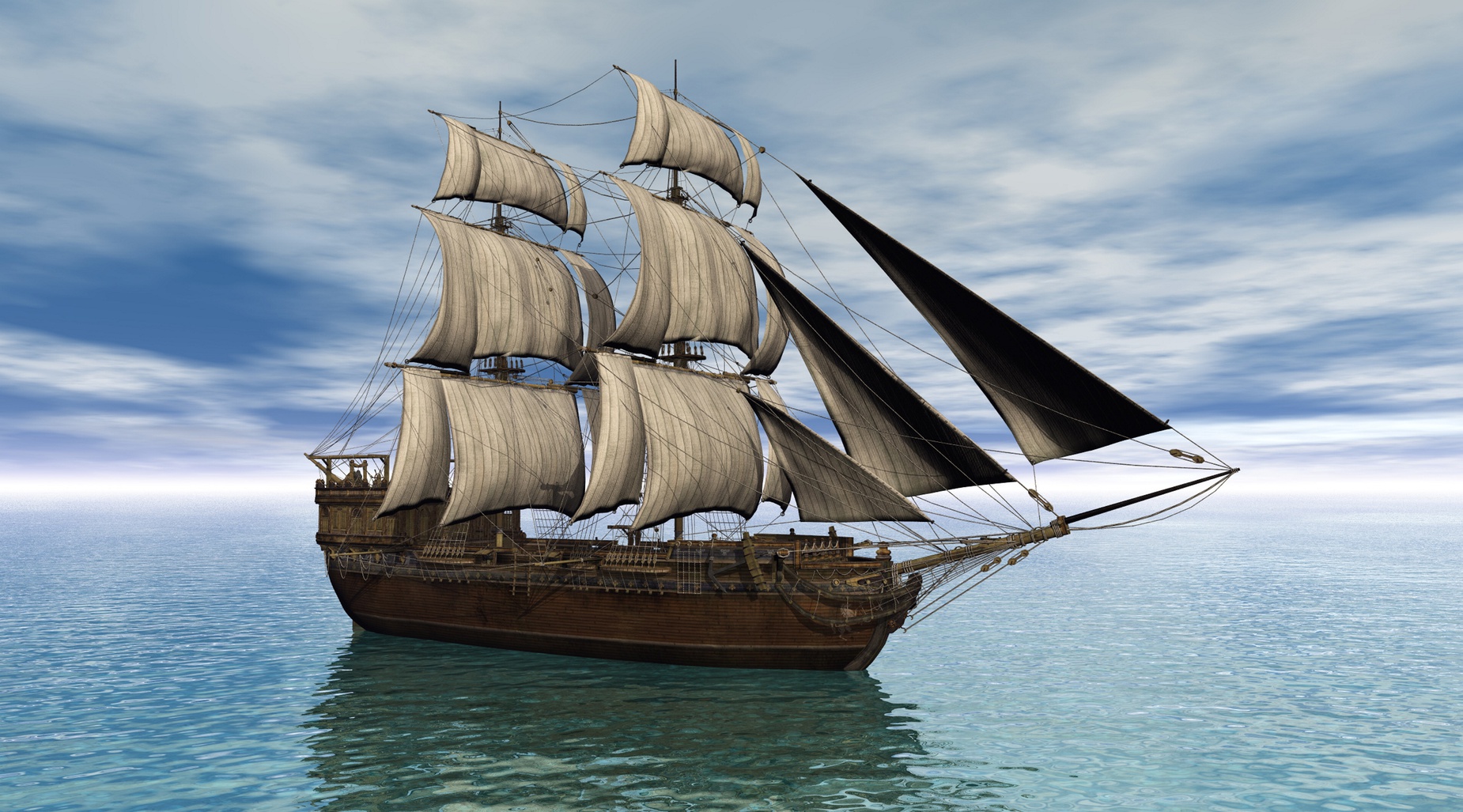
This word comes from the Dutch word “jacht”, which means “hunt”. Furthermore, “ j achtschepen” was the name for narrow, light and very fast sailing boats that the Dutchmen were using for intercepting larger and slower boats and ships.
One of the ‘hunters’ was given as a present to the British king Charles II . In His Majesty’s free time this vessel was not used for intercepting. Instead, was using it for fun. That is why the word “yacht” eventually became the term for vessels/boats made for pleasure.
I would highly appreciate comments from the native speakers of the English and Dutch languages. Especially since I am not one of them. No matter whether this story is true or not, it still sounds interesting to me.
Find out more about sailing quotes and phrases here .
I wish you a calm sea, a fine wind and a strong mast!
8 thoughts on “The Yacht – The Meaning and the Origin of the Word”
I looked up the origin of the word yacht, and it said it is a mid 16th century, Early Modern Dutch word from ‘jaght,’ from ‘jaghtschip’ meaning “fast pirate ship,” from ‘jaght’ which means “hunting” + ‘schip’ meaning “ship”.
I like the story of King Charles. It makes sense that that is why a yacht has the definite aura of wealth and pleasure!
Almost but not 100%. Actually the verb ‘jagen’ to hunt goes back to middle high German,i.e. Deutsch not Dutch, and before that it was ‘jagon’ in lower high German. But it seems that it all started with Greek and travelled North.
I guess that mid 16th century, the Dutch word jaght or jaghtschip was the word that got picked up. Not the earlier middle high German word where it came from.
Today it is jacht in Dutch, meaning hunting and it also the word for a luxury sailing boat.
In German Jagd is the word for hunt. Germans use the Dutch or English Jacht or Yacht for the boat.
Did the Germans design the original schooners? I think not! Since some Netherlanders speak a form of the Deutschland language, this word is shared (jacht/Dutch—jagd/German: meaning to hunt). It was the Dutch (Netherlanders) who designed the “flyut” or flute sailing ships, l-o-n-g before any British ever thought of such a ship—and—any German. The schooner grew out of the basic designs of the Dutch flute sailing ship (known for it’s speed). The Dutch economy relied heavily on trade and shipping, and were, thus, cutting edge innovators in ship building. Their engineering skills, was and is, plainly seen in their dike system, as well.
My father built a beautiful wooden replica of the”yacht” referred by the author (“Yacht Mary”) which was a present from the city of Amsterdam to King Charles II of England in 1660. They wrecked the ship a few years later (already too much partying on yachts, perhaps?)
I noticed the plaque that came with the model ship spelled the name as “Yatch” Mary. First, I thought, maybe, it was old English or Dutch spelling but it looks like it was just an error.
Nice, We have made an eplainermovie about this subject!
https://www.youtube.com/watch?v=l3HDZHF8w2E
In my head yogurt used to be spelled yoghurt and yacht used to be spelled yaught. Am I completely mis-remembering?
Dear Margaret, you are quite right for the spelling of the word yogurt that used to be, and sometimes still is, spelled with its old spelling yoghurt. However, there are no traces of the word yacht to have ever been spelled as yaught, but it would be best to take an etymology expert’s word for it.
Leave a Comment Cancel Reply
Your email address will not be published. Required fields are marked *
Save my name, email, and website in this browser for the next time I comment.
This site uses Akismet to reduce spam. Learn how your comment data is processed .
The Lux Authority
Lux news today.
- Celebrities
- Cosmopolitan
The History of Yachting: Where it Started and Where it’s Heading
Becoming a yacht owner can change your life for the better. .
Thanks to recent cures, they don’t cause environmental harm like cars and motorbikes do. Travelling the world on a yacht, or participating in yachting competitions is fun and gives you enjoyment. Even still, you might be curious about the origins of this leisurely activity. Let’s take a look at the history of yachting and some interesting facts you probably never new.
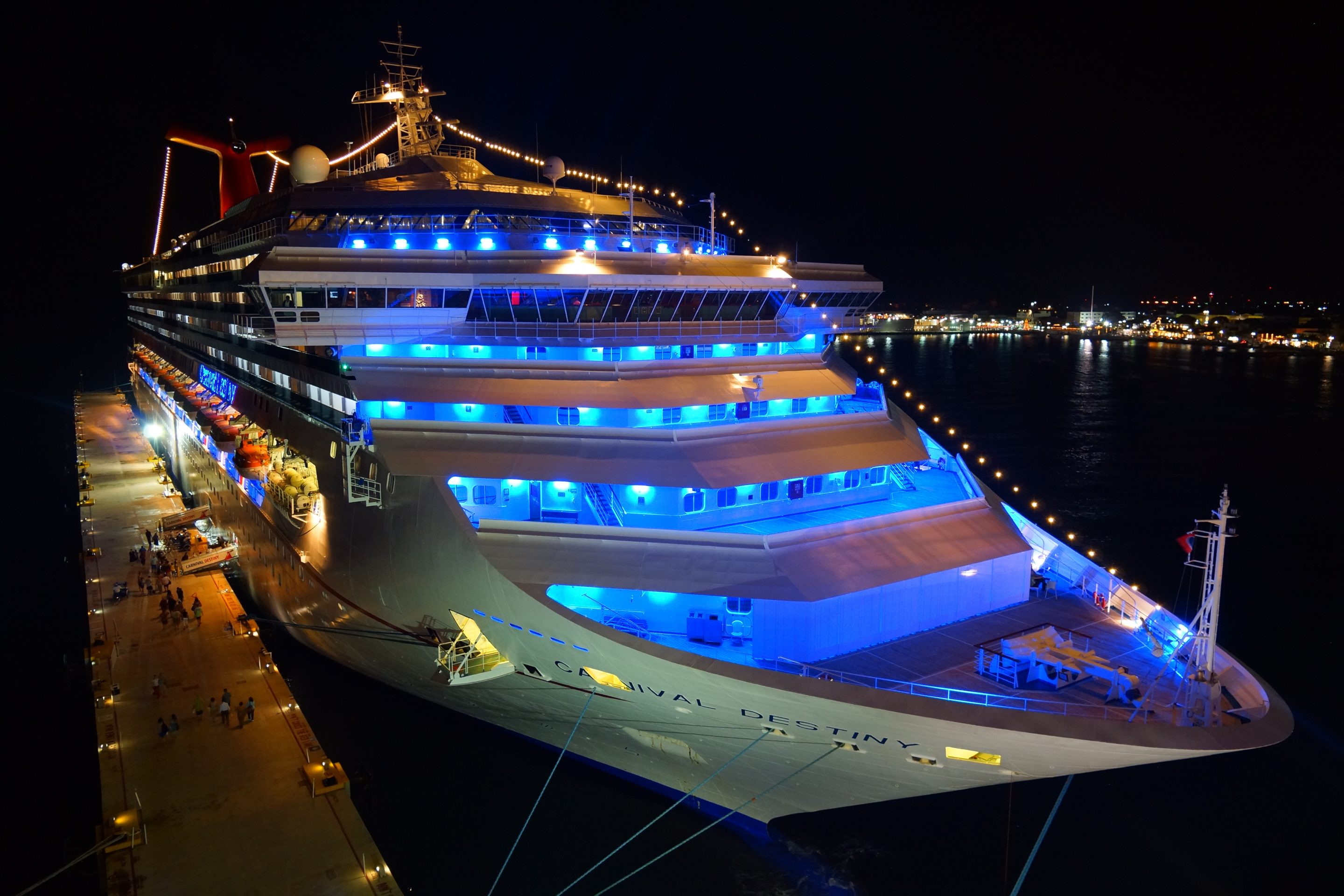
What is a Yacht?
Yachts are mainly privately owned and come in a variety of sizes with a cabin. Yachts usually cost around 10 percent of their purchase price in annual maintenance. These vessels require full-time staff including chefs, a captain, engineers and stewards. Most owners rent out their yacht to people on vacation to cover maintenance costs. They’re typically defined as their size to differ from a boat. The bigger and more expensive a boat is, the more chances are of it being considered a yacht.
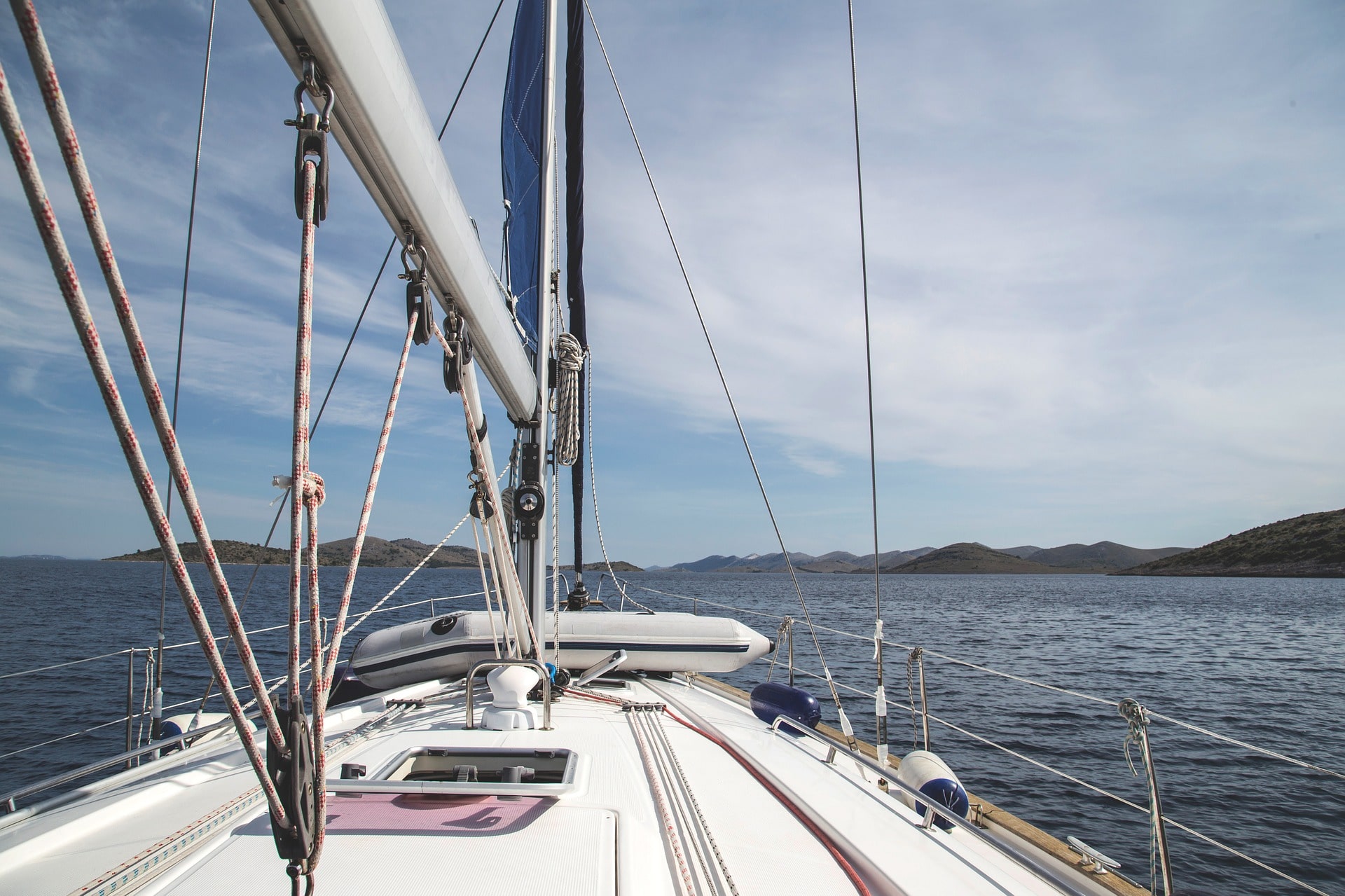
Yachts are still a fairly new territory, and many of the biggest ones didn’t exist 20 years ago. Used for pleasure or sports, the term ‘yacht’ originates from the word ‘hunt’ to purse pirates around and in shallow waters. They’re now considered more of a leisure purpose and come in two different classes: power boats and sailing. Their length and interior can range extensively. On average, they’re usually 40 feet long, though above 100 feet is considered a super-yacht. Many offer modern conveniences such as cable, air conditioning, computer-controlled sailing and more.
The Fascinating History of Yachting
Let’s take a look at the history of yachting. What was once only considered a sport has become an act of pleasure and transport. More celebrities own a yacht now than ever before. Though they’re still expensive to buy, people’s love for them makes them easier to purchase. You can now hire crew members and customize your yacht to accommodate your lifestyle.
Where Did Yachting Originate?
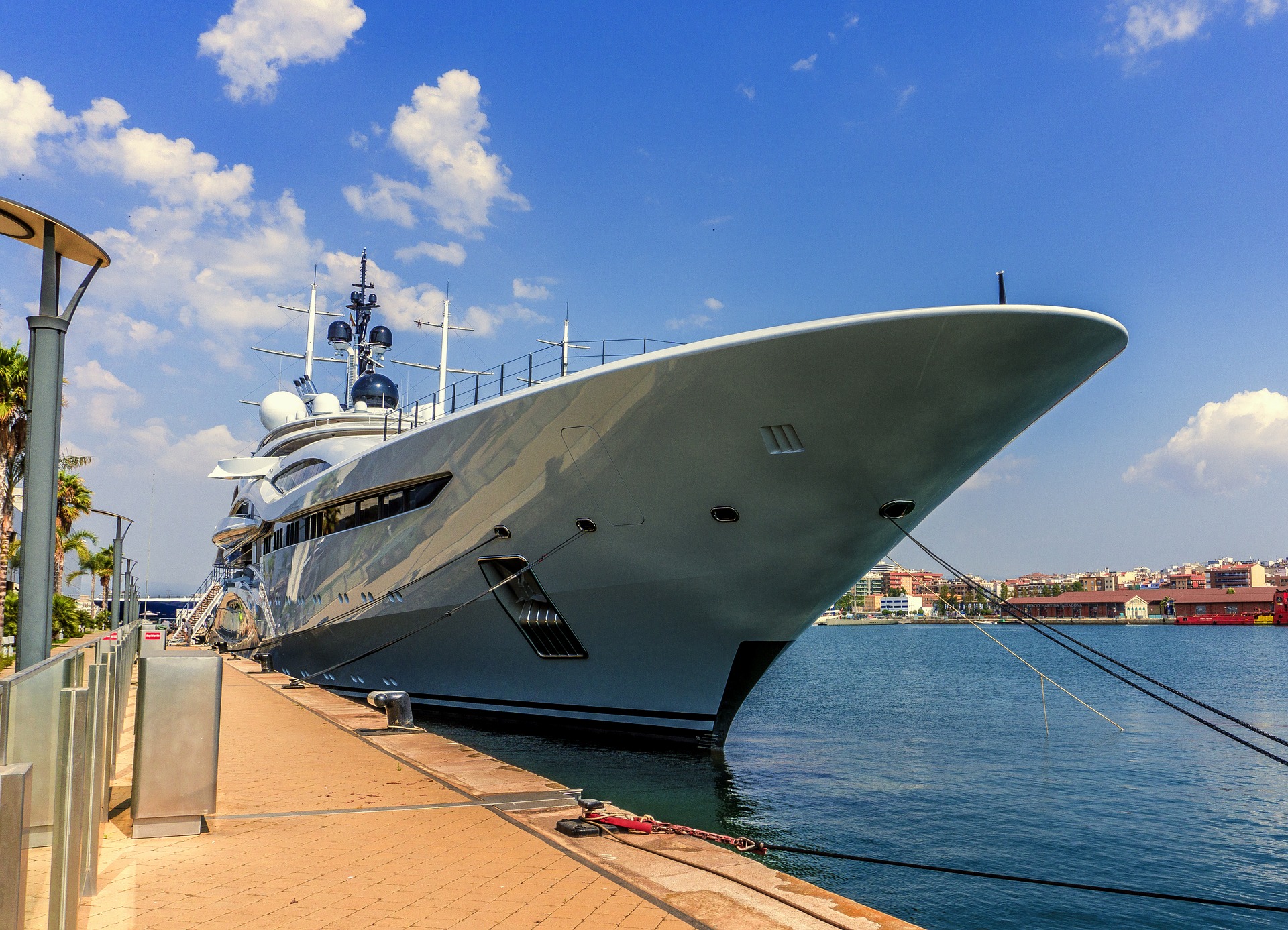
The history of yachting is fascinating. First invented in the 14 th century, the Dutch used fast and small boats for chasing criminals and pirates. Their sole purpose was to navigate quickly on waters. However, rich owners and merchants began using these yachts for personal use to travel overseas as a quick mode of transport. Quickly, the trend caught on and wealthy individuals purchased yachts for personal use. Many would use them to just travel the waters with no particular destination, other than an outing.
When Charles II of England spent 10 years in Holland, people celebrated his return to Amsterdam with a luxurious yacht. This included a crew of 20 people and he named the yacht, Mary. Charles II enjoyed sailing her along the Thames and studied the architecture and design of yachts. After educating himself, he built 20 of his own, giving him credit as the world’s first yacht developer. Several family members became a creator and developer too.
At this point, owning a yacht was considered a sport amongst Kings for over 100 years. By the 1800’s, the sport of yachting developed to other crowns of Europe. Only the wealthiest people in the world could join in, and quickly yacht clubs formed. This laid the groundwork for the popular leisure activity we've come to know and love today.
When Did Yachting Originate?
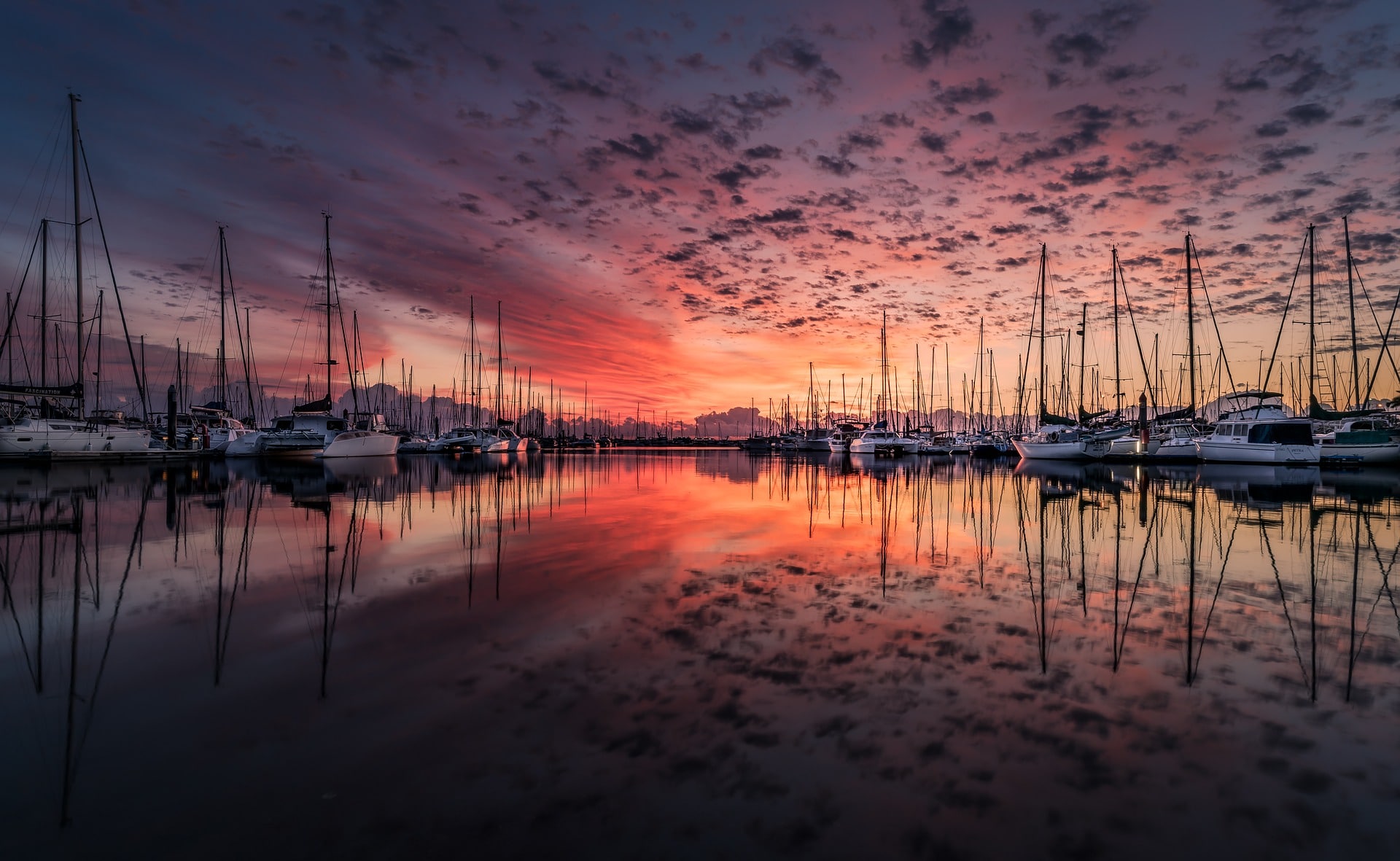
In 1661, there was a 40-mile race on the Thames between Charles II of England and the Duke of York. The history of yachting – particularly the sport - began here. In 1720, the first yacht club in the world established itself as the Cork Water Club. However, it wasn’t until 50 years later than two more clubs followed in England.
It makes sense that the sport could only occur in regions with plenty of water which also had suitable conditions. There also needed to be plenty of materials and resources in these countries to develop the boats. Yachting was still new at this point, so only wealthy people participated.
On June 1815, the world’s most famous yacht club formed in England. They named themselves The Royal Yacht Squadron with 42 gentlemen joining. On July 30, 1844, the United States formed the New York Yacht Club. They had the intention of competing with the English team and built a new yacht with a faster and sleeker design to represent the club.
The United States crossed the Atlantic in 1851 and invited England’s fastest yachts to a race. However, no-one would race it as it measured an intimidating 101 feet. America eventually joined a competition around the Isle of Wight and raced 15 other yachts for 53 miles, and finished eight minutes earlier than the runner up.
The Evolution of Yachting
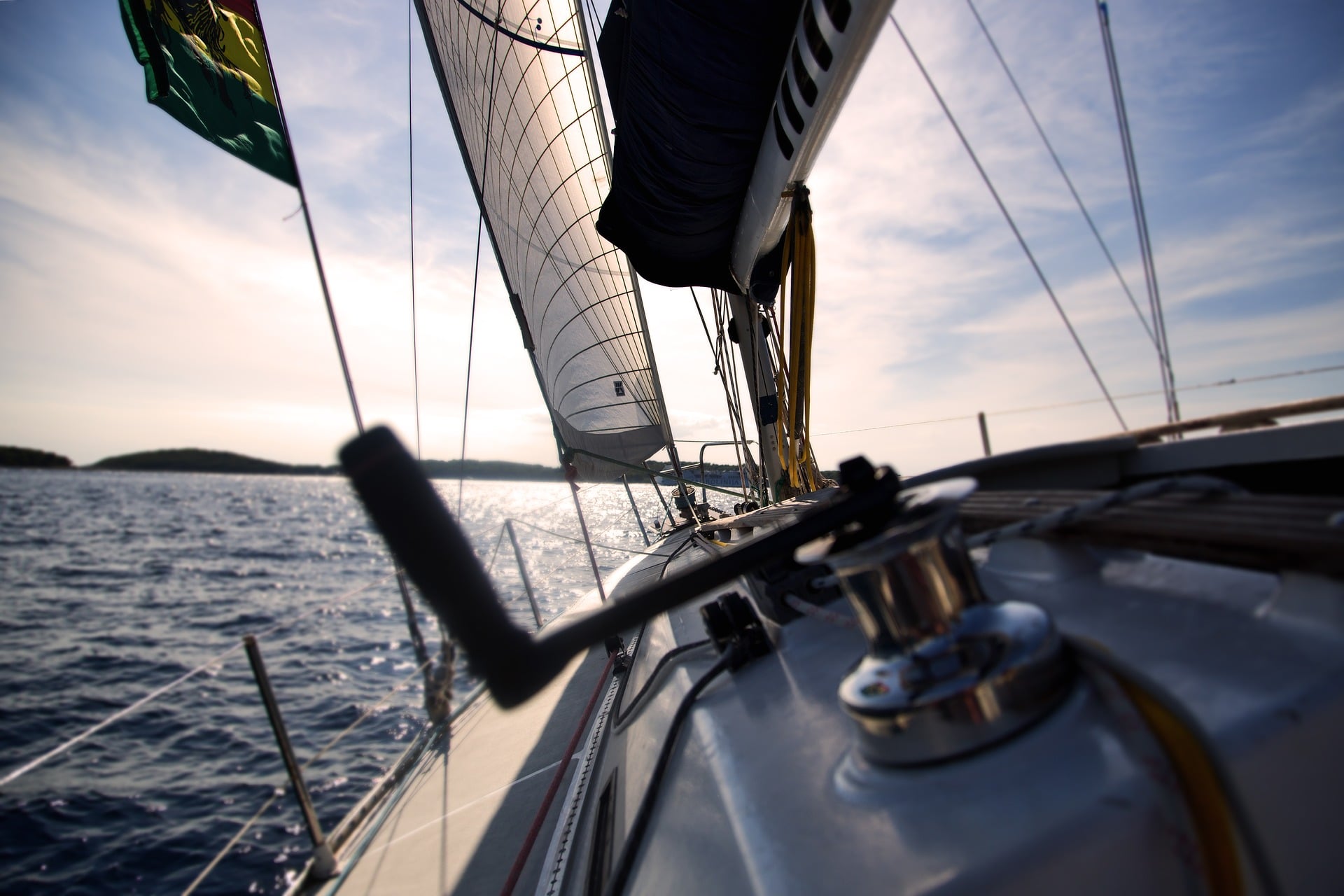
After the First World War and post war depression in Europe, yachting quickly dried out. As such vessels were possessed by the wealthiest people, owning one became difficult. Although people didn’t participate in the sport of yachting for several years to come, the War saw excellent technical developments in powering yachts.
They began being built with large diesel engines to power them quicker and faster through waters. Due to their new speed, corporations purchased them and the government owned 13 of the 29 diesel-engine yachts.
Yachts are now a lot bigger than they used to be. Thanks to technological development, people are more open to the idea of travelling around the world whilst being in contact with people on land. Satellite television, the Internet, phones, signals and more are available for owners. In the ’80’s, the world saw the superyacht industry. The number of wealthy people owning and affording yachts became a social acceptance.
As more yachts were produced and came with advanced navigation and technology, crew members trained professionally to become qualified to work on water. Increased regulations have also made it more possible for people to work and travel throughout different countries.
What’s Involved in Owning a Yacht?
Have you ever dreamed of owning a yacht? The truth is, it’s not always plain sailing. There are typically three categories to research: crew, maintenance and dockage. If you own a yacht over 80 feet, a crew is necessary and costs on average $6,500 per staff per month. The number of crew members depends on the level of service you require.
Maintenance not only takes a huge chunk of money, but time and effort. As your yacht reaches five years old, it’s time to consider repairs such as batteries, seals, pumps and other general maintenance tasks. Often, these maintenance costs are included in your warranty if the yacht is relatively new. However, it’s important to consider storing your yacht, fuel and food when you’re using it. On average, you’ll spend 10 percent of the yacht’s cost every year on general maintenance.
Running and operating a yacht isn’t cheap. For an 80ft yacht, dockage prices will cost between $1,200 and $6,000 per month, depending on your location of course. The smaller the yacht and more derelict the area, the cheaper the dockage price. Be sure to consider all of the expenses, as if you aren't prepared it can quickly become a monetary pitfall.
What Do You Know about The History of Yachting?
We hope you enjoyed reading about the history of yachting and how it’s evolved over centuries. The future of yachts looks bright and promising. By 2050, it’s predicated that we’ll use 3D printed yachts to give you a customizable experience. Yacht owner Neville Crichton travels the world via his yacht and believes that future owners will explore new remote locations not yet discovered.
What do you know about the history of yachting? We’d love to hear about your knowledge. Share your facts and information in the comments to keep this discussion going.
Related Article: The VanTom Superyacht Sets the New Standard for Luxury Vessels
Freelance Writer and Vocal Coach with a passion for travelling - particularly the United States. Fitness enthusiast when I feel like it, but you can catch me sipping pink Gin more often than not.
You Might Also Like

Luxury Version of Cars That Are Actually Worth the Extra Thousands

Last-Minute Auto Gifts Car Enthusiasts Actually Want for Christmas
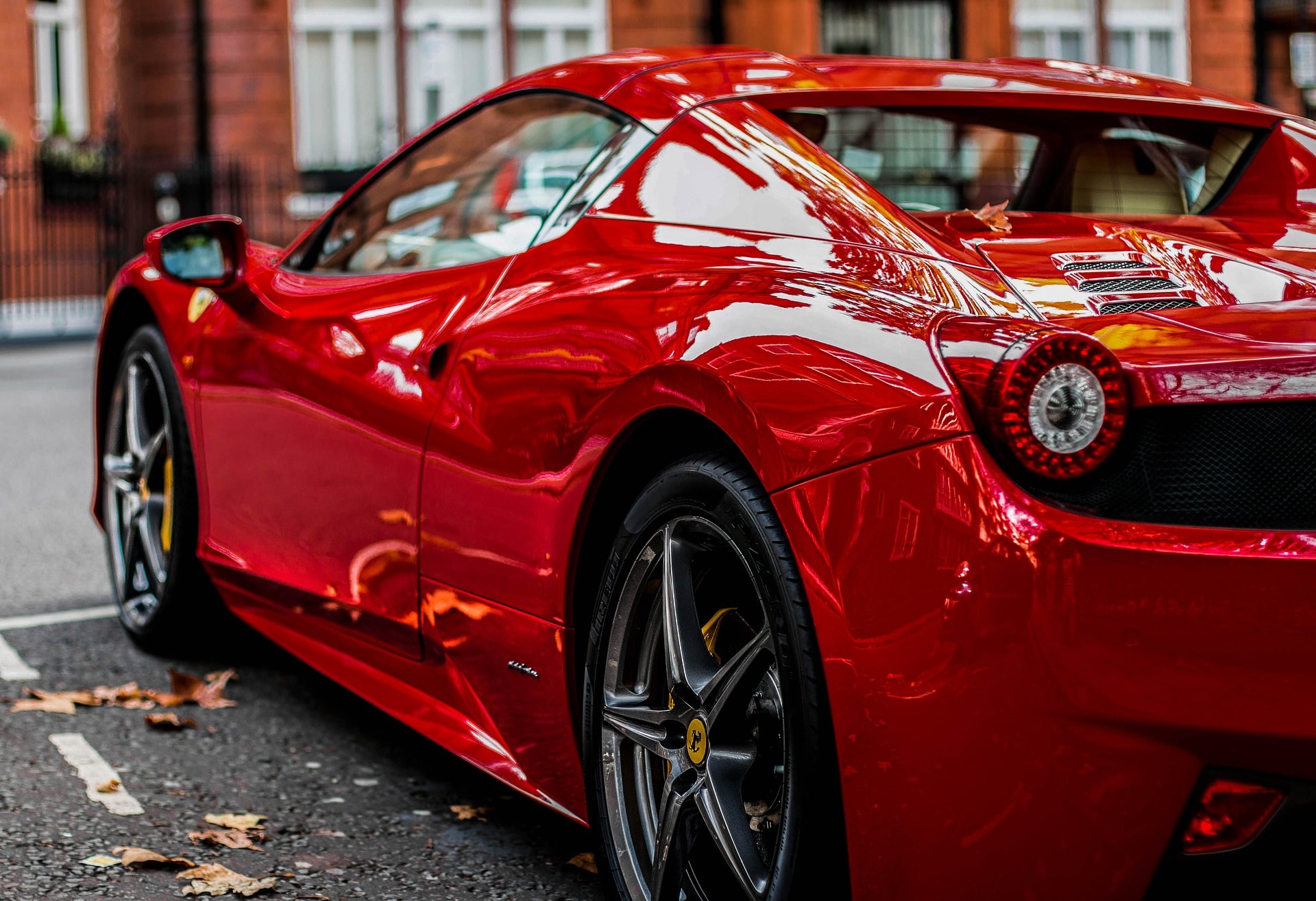
Amazing Vehicle Hacks You’d Have Never Known But Must Try
Leave a reply cancel reply.
The Evolution of Boats Over Time: A Journey Through History
Introduction to the topic.
“From the humble rafts of ancient civilizations to the magnificent ships that sail the oceans today, boats have been an integral part of human existence, shaping our exploration, trade, and cultural development. Imagine a world without boats, and you’ll find a world where boundaries remain unexplored and opportunities unrealized.”
Boats have played a crucial role in the development of human civilization since time immemorial. They have served as vehicles for transportation, tools for exploration, and platforms for cultural exchange. The history of boats spans thousands of years, reflecting our innate curiosity and desire to conquer the vast expanses of water that cover our planet.
This article will take you on a fascinating journey through the evolution of boats, highlighting key milestones and their impact on various aspects of human life. From the early watercraft used by ancient civilizations to the advanced vessels of the modern era, we will explore how boats have shaped our history, facilitated trade and communication, and provided the means for great discoveries and adventures.
The Origins of Boats
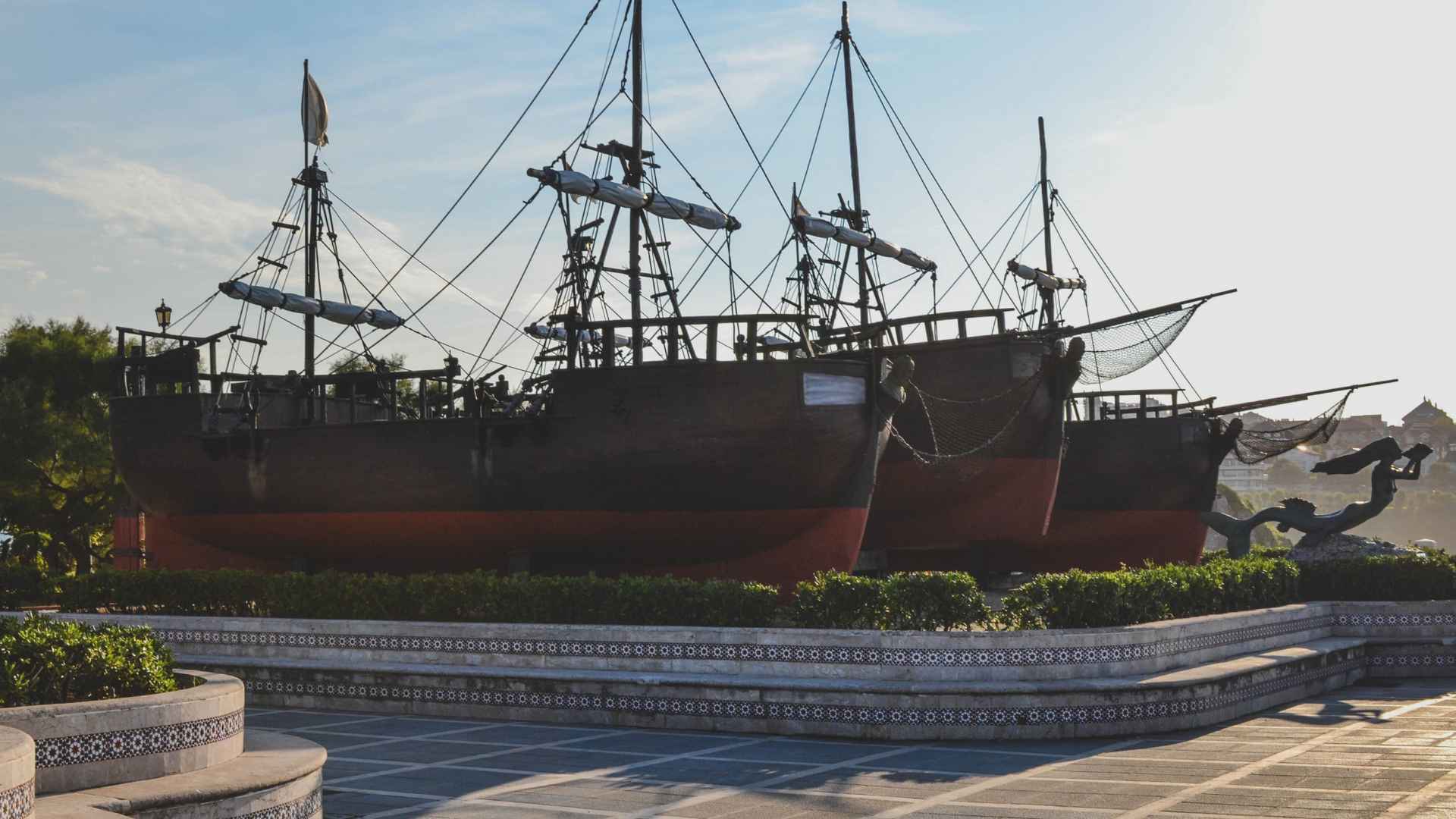
Boats, in their simplest form, can be traced back to prehistoric times when humans first recognized the potential of floating objects. These early watercrafts were rudimentary, often crafted from hollowed-out logs or bundles of reeds.
Prehistoric watercraft: primitive boats made from hollowed-out logs or bundles of reeds.
Prehistoric watercrafts serve as a testament to human ingenuity and resourcefulness in utilizing the materials available to them. These early examples of primitive boats were often constructed from hollowed-out logs or bundles of reeds, reflecting the fundamental desire of our ancestors to explore bodies of water and overcome the challenges they presented.
1. Hollowed-out logs
One of the earliest forms of watercraft can be traced back to the use of hollowed-out logs. In this method, a large tree trunk was carefully hollowed, either by burning or using stone tools, to create a boat-like structure. This simple yet effective design provided buoyancy and stability, allowing early humans to venture into lakes, rivers, and other bodies of water.
Hollowed-out log boats were primarily used for fishing and transportation purposes. They enabled humans to access resources that were otherwise difficult to reach, expanding their territories and facilitating trade between different communities. These early boats laid the foundation for future advancements in watercraft design.
2. Bundles of reeds
In areas where logs were scarce, such as marshlands or regions with abundant reed growth, our ancestors developed alternative techniques using bundles of reeds. These boats, often referred to as coracles or reed boats, were created by tying bundles of reeds together to form a buoyant structure.
The construction of reed boats varied across different regions and cultures. For example, in ancient Mesopotamia, bundles of reeds were lashed together to create guffas, lightweight boats used for river transportation. Similarly, the ancient Egyptians used bundled papyrus reeds to construct small boats known as skiffs or “papyrus boats.”
Reed boats were particularly suited for navigating shallow waters, such as marshes or calm river systems. They provided early humans with the means to fish, hunt waterfowl, and gather resources from wetland environments. These boats were often lightweight, portable, and easily repairable, making them practical for the needs of early societies.
Both hollowed-out log boats and reed boats demonstrated the initial steps humans took in harnessing the power of water transportation. These primitive watercrafts allowed our ancestors to explore, trade, and interact with their surroundings in ways that were previously inaccessible. As civilizations developed and technology progressed, these early examples paved the way for more sophisticated boat designs and propelled humanity further along the path of maritime exploration and discovery.
Early river civilizations: development of boats by ancient river civilizations
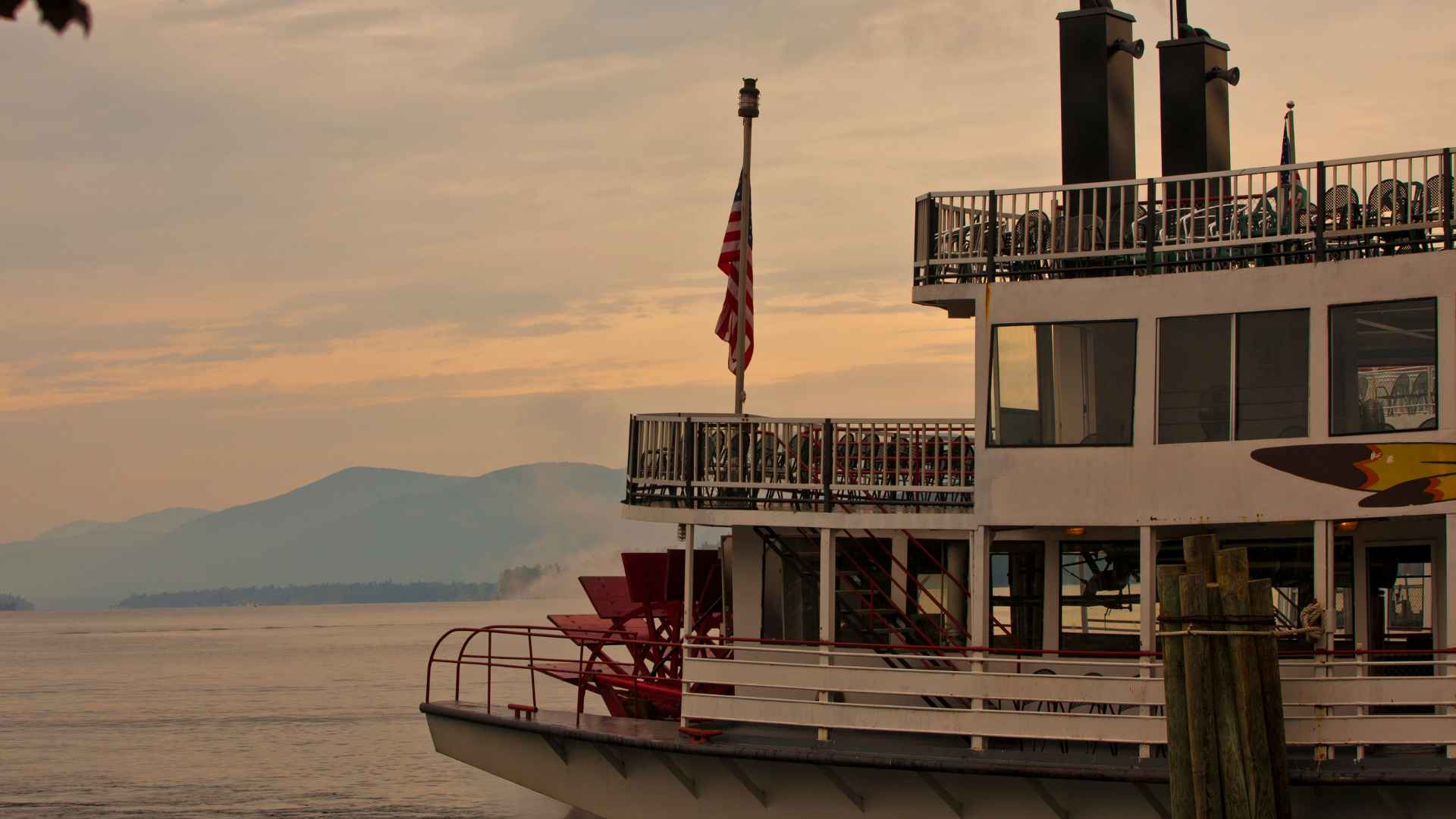
The development of boats by ancient river civilizations, such as the Egyptians and Mesopotamians, marked a significant advancement in maritime technology and played a crucial role in shaping their societies. These civilizations recognized the value of rivers as lifelines for transportation, trade, and cultural exchange, leading to remarkable innovations in boat design and construction.
1. Ancient Egypt
The Egyptians, with their close proximity to the Nile River, developed an intricate understanding of boat construction and navigation. Boats played a vital role in the economic, religious, and cultural life of ancient Egypt. The Egyptians built various types of boats tailored to different purposes. The most famous of these were the “solar boats” associated with religious rituals and the afterlife.
These boats were built using planks and were often buried alongside pharaohs in their tombs. The Khufu Solar Boat, discovered near the Great Pyramid of Giza, is a remarkable example of ancient Egyptian boat craftsmanship. For trade and transportation, the Egyptians used riverboats known as “kedjet,” which were constructed using wooden planks and equipped with sails.
These boats allowed the Egyptians to navigate the Nile River, facilitating the movement of goods, people, and military expeditions between different regions of their empire. They were also used in fishing and hunting.
2. Mesopotamia
The ancient civilizations of Mesopotamia, located between the Tigris and Euphrates rivers, also made significant contributions to boat development. The availability of these rivers fostered the growth of advanced irrigation systems and facilitated the transportation of goods. In Mesopotamia, boats made from bundles of reeds tied together, called “guffas,” were commonly used.
These lightweight vessels were well-suited for navigating the shallow waters of the Euphrates and Tigris rivers. Guffas allowed the Mesopotamians to transport people, goods, and livestock, connecting cities and fostering trade networks.
The Mesopotamians also developed larger sailing ships for long-distance trade in the Persian Gulf and beyond. These ships, known as “biremes” or “triremes,” had multiple rows of oars and were capable of carrying substantial cargo. They played a crucial role in expanding Mesopotamian influence and facilitating cultural exchange with other civilizations in the region.
The boat designs of both ancient Egypt and Mesopotamia were products of their respective environments, resources, and societal needs. These river civilizations relied on boats for transportation, trade, agriculture, and defense, contributing to the development of sophisticated shipbuilding techniques and navigational knowledge.
The advancements made by these ancient river civilizations laid the foundation for future maritime exploration and trade. The knowledge and technologies developed during this period would be further refined and disseminated to other cultures, shaping the evolution of boats in the centuries to come.
Navigating the open seas: advancements in boat design and construction that allowed early seafaring civilizations to explore and trade across vast distances.
The advancements in boat design and construction during the era of early seafaring civilizations revolutionized their ability to navigate the open seas and undertake long-distance exploration and trade. These advancements opened up new horizons, connecting distant lands and cultures and paving the way for significant historical developments.
1. Phoenicians
The Phoenicians, a maritime civilization flourishing in the eastern Mediterranean from the 12th to the 6th centuries BCE, played a crucial role in pushing the boundaries of seafaring. They were renowned for their shipbuilding skills and navigation prowess, which allowed them to explore and establish extensive trade networks.
Phoenician shipbuilders developed sturdy wooden ships known as “galleys” or “biremes.” These vessels had multiple rows of oars and were propelled by both oarsmen and sails. They were constructed using a combination of wooden planks and strong ropes, demonstrating a sophisticated understanding of shipbuilding techniques.
The Phoenicians utilized their advanced boats to navigate the Mediterranean Sea and establish trade routes connecting different civilizations. They traded goods such as textiles, metalwork, and agricultural products, contributing to the cultural exchange and economic prosperity of the regions they visited.
2. Polynesians
In the Pacific Ocean, the Polynesians demonstrated remarkable achievements in seafaring and boat design. They developed exceptional double-hulled canoes , known as “wa’a,” capable of withstanding long-distance voyages.
Polynesian boat construction incorporated sturdy wooden frames and hulls made from a combination of planks and natural fibers. These canoes were equipped with sails made from woven palm leaves or other locally available materials. The design of the double hulls provided stability and increased carrying capacity, enabling the Polynesians to undertake extended journeys across vast expanses of the Pacific.
Through their exceptional navigation techniques, which relied on celestial observations, knowledge of ocean currents, and bird migrations, the Polynesians explored and settled numerous islands across the Pacific. This seafaring culture played a vital role in the dispersal of people, trade, and the exchange of ideas throughout the Pacific region.
3. Ancient Greeks
The ancient Greeks also made notable advancements in ship design, particularly during the Classical period. They developed triremes, ancient warships propelled by multiple rows of oars. These vessels had a sleek design, with a ram at the prow for naval warfare.
Greek shipbuilders refined their construction techniques, employing a combination of wooden planks, internal bracing, and strategic use of sails. These innovations allowed Greek ships to achieve impressive speeds and manoeuvrability, enhancing their naval dominance in the Mediterranean and facilitating trade and colonization efforts.
The advancements in boat design and construction during the era of early seafaring civilizations transformed the possibilities of maritime exploration and trade. These advancements led to the establishment of trade routes, cultural exchanges, and the dissemination of knowledge across vast distances, shaping the course of history and laying the foundation for future maritime developments.
Innovations and Ancient Maritime Cultures:
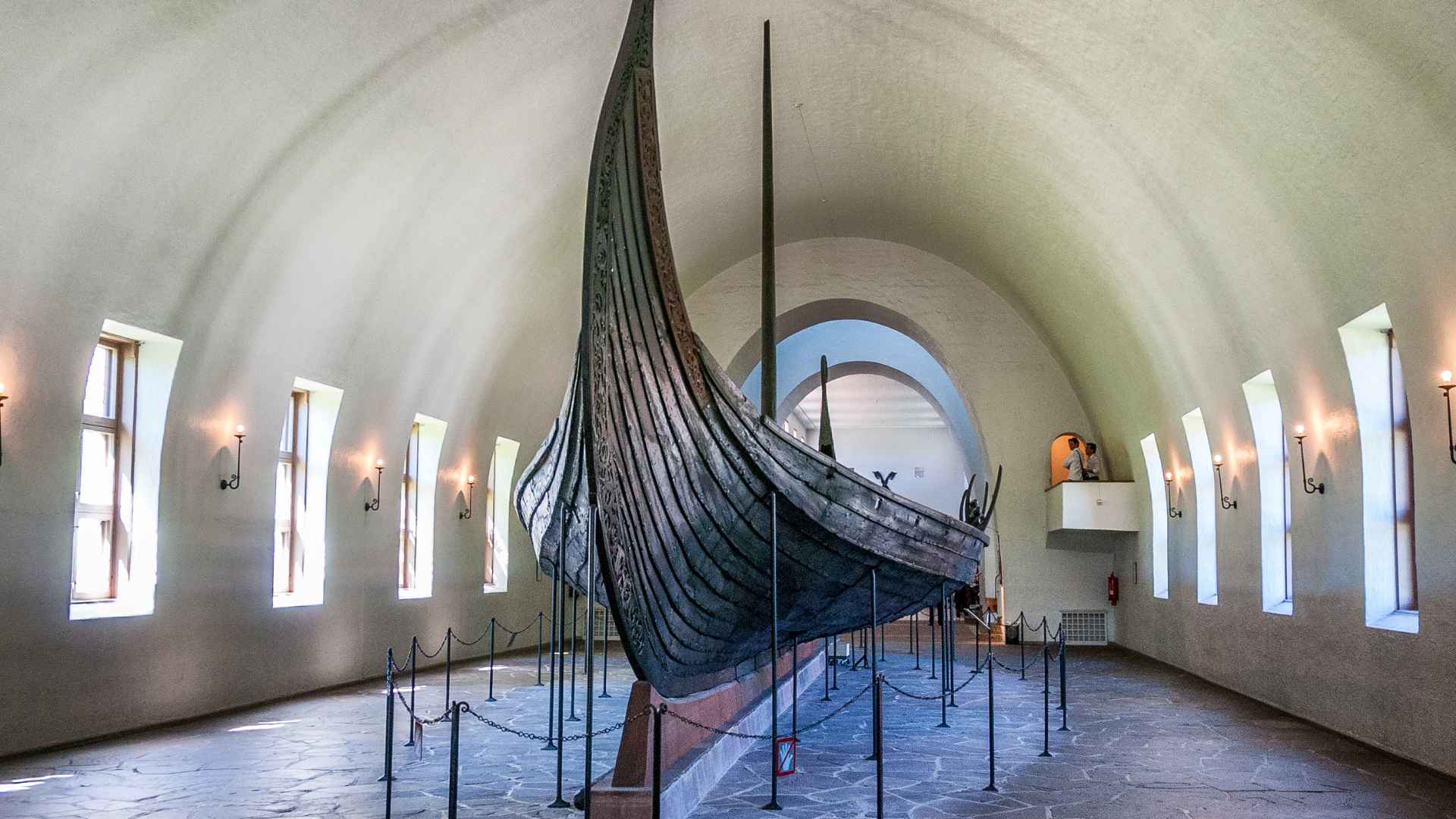
The Phoenicians: the maritime prowess of the Phoenicians and their role in spreading boat-building knowledge.
The Phoenicians were renowned for their maritime prowess and played a significant role in spreading boat-building knowledge throughout the ancient world. Hailing from the eastern Mediterranean, their seafaring skills and trade networks extended across the region.
Phoenician shipbuilders excelled in constructing sturdy and seaworthy vessels. They developed advanced techniques, including the use of mortise and tenon joints and wooden pegs, to build strong hulls. Their ships, such as the biremes and triremes, were propelled by both oars and sails, enabling them to navigate long distances efficiently.
The Phoenicians established extensive trade routes, reaching as far as Britain in the west and the Red Sea in the east. Through their maritime activities, they disseminated boat-building knowledge and techniques to other civilizations they encountered. This knowledge exchange contributed to the advancement of boat design and construction in the ancient world.
Greek and Roman vessels: technological advancements in boat design during the classical era, including triremes and galleys.
During the classical era, both the Greeks and Romans made significant technological advancements in boat design. The Greeks, in particular, developed renowned naval vessels such as triremes and galleys.
Triremes were warships propelled by three banks of oars on each side, giving them exceptional speed and maneuverability. These vessels featured a ram on the prow for ramming enemy ships during naval battles. The construction of triremes involved precise woodworking, internal bracing, and careful distribution of weight to ensure optimal performance.
Galleys, used for both warfare and trade, were longer vessels with multiple rows of oars and a large sail. The Romans, inspired by Greek shipbuilding techniques, adopted and further refined the design of galleys. They introduced advancements such as the “corvus,” a boarding bridge with a spike that could be dropped onto enemy ships, enhancing their naval tactics.
The technological advancements in boat design during the classical era revolutionized naval warfare and facilitated long-distance trade. These vessels not only influenced Mediterranean cultures but also inspired later civilizations in their boat-building endeavors.
Viking longships: Iconic longships of the Vikings, which played a crucial role in their explorations and raids.
The Vikings, known for their seafaring and exploration during the Viking Age (8th to 11th centuries CE), employed iconic longships that played a crucial role in their expeditions, raids, and trade activities.
Viking longships were sleek, shallow-drafted vessels with a symmetrical design and a flexible hull. They were propelled by both oars and sails, allowing the Vikings to navigate rivers, coastal waters, and even venture across the open seas. The longships’ shallow draft enabled them to navigate shallow waters and make landfall in areas unreachable by larger vessels.
These ships were not only instrumental in Viking raids but also served as tools for exploration, trade, and colonization. The Viking longships facilitated the exploration and settlement of regions such as Iceland, Greenland, and even parts of North America, leaving a lasting impact on the cultural and historical development of these areas.
The Viking longships showcased remarkable craftsmanship, with overlapping planks, clinker-built construction, and sophisticated rigging systems. They were designed to withstand challenging maritime conditions and provided the Vikings with a versatile and formidable means of transportation and exploration.
The innovations and advancements in boat design by ancient maritime cultures, such as the Phoenicians, Greeks, Romans, and Vikings, left an indelible mark on maritime history. These cultures pushed the boundaries of boat-building techniques, enabling them to navigate vast distances, engage in trade and exploration, and shape the course of human civilization.
Medieval and Renaissance Developments:
Arab dhow ships: influence of arab maritime culture and their development of the dhow ships, known for their lateen sails..
Arab maritime culture made significant contributions to boat design and navigation, particularly through the development of dhow ships. Dhows were sailing vessels characterized by their distinctive lateen sails, which allowed for efficient navigation against the prevailing winds.
Arab sailors and shipbuilders mastered the art of constructing dhows using indigenous materials such as teak wood. The hulls were built with a sewn plank technique, where planks were stitched together with coconut fiber or other natural fibers. This flexible construction method made the dhows resilient and capable of navigating shallow waters.
Dhows played a crucial role in Arab trade networks, facilitating maritime commerce across the Indian Ocean and the Red Sea. They were versatile vessels, capable of carrying goods, passengers, and even livestock. The lateen sails of dhows enabled them to navigate both coastal and open waters, making them ideal for long-distance travel and trade.
The influence of Arab maritime culture and the design of dhow ships spread throughout the Indian Ocean, influencing boat construction in regions such as East Africa, India, and Southeast Asia. Even today, the traditional design and sail plan of dhows continue to be used in certain parts of the world.
Chinese treasure ships: impressive fleet of Chinese treasure ships commanded by Admiral Zheng He during the Ming Dynasty.
During the Ming Dynasty in the 15th century, China witnessed a remarkable era of maritime exploration led by Admiral Zheng He. Zheng He commanded an impressive fleet of Chinese treasure ships, known as “baochuan,” which showcased remarkable advancements in shipbuilding for their time.
The treasure ships were colossal in size, with some estimates suggesting they could reach up to 400 feet in length. These massive ships featured multiple masts and were constructed using advanced techniques such as keel compartments for added stability and watertight bulkheads. The fleet was equipped with navigational instruments, advanced rigging systems, and carried a significant cargo capacity.
Zheng He’s treasure ships undertook seven major expeditions, exploring and establishing diplomatic relations with countries throughout Southeast Asia, the Indian Ocean, and even as far as East Africa. The voyages were instrumental in expanding Chinese influence, promoting trade, and fostering cultural exchange.
The treasure ships of Admiral Zheng He demonstrated China’s maritime capabilities and showcased its technological advancements in shipbuilding, navigation, and exploration. However, with the shift in political priorities, China subsequently curtailed its maritime expeditions, and the treasure ship fleet eventually fell into disuse.

European exploration vessels: Advancements in shipbuilding during the Age of Exploration, including caravels and galleons.
During the Age of Exploration, European nations made remarkable advancements in shipbuilding, enabling them to undertake ambitious voyages of discovery and trade.
Caravels were one such development that revolutionized European exploration. Caravels were small, highly maneuverable ships with a combination of square and lateen sails. They were equipped with rudders mounted at the stern, allowing for increased control and maneuverability. Caravels were the preferred vessels for explorers such as Christopher Columbus and Vasco da Gama, enabling them to venture into uncharted waters and reach distant lands.
Galleons were another notable development in European shipbuilding. These large, heavily armed vessels combined the maneuverability of caravels with the firepower of warships. Galleons were equipped with multiple decks and carried an impressive array of cannons, making them formidable ships of war and exploration. They played a pivotal role in European colonial expansion and trade during the 16th and 17th centuries.
The advancements in shipbuilding during the Age of Exploration allowed European nations to undertake ambitious voyages of discovery, colonization, and trade. These vessels facilitated the exploration of new lands, the establishment of global trade networks, and the reshaping of world history.
Overall, the medieval and Renaissance periods witnessed significant developments in boat design and construction, driven by Arab, Chinese, and European maritime cultures. These advancements expanded the possibilities of maritime exploration, trade, and cultural exchange, leaving a lasting impact on the course of human history.
Industrial Revolution and Modern Boats
Steam-powered ships: revolutionary impact of steam-powered ships on transportation, trade, and warfare..
The advent of steam-powered ships during the Industrial Revolution brought about a revolutionary transformation in maritime transportation, trade, and warfare. Steam engines replaced wind and muscle power, allowing vessels to navigate more efficiently and reliably, regardless of wind conditions.
Steam-powered ships, such as paddle steamers and later screw-driven steamships, played a significant role in expanding global trade and transportation networks. They were not reliant on wind patterns, enabling them to travel along predetermined routes with greater speed and reliability. Steamships facilitated the transportation of goods and people across vast distances, connecting continents and fueling economic growth.
Steam-powered naval vessels also transformed warfare at sea. Ironclads, powered by steam engines and equipped with heavy armor and powerful artillery, revolutionized naval warfare during the mid-19th century. These ships rendered traditional wooden sailing vessels obsolete, changing the dynamics of naval conflicts and defense strategies.
The birth of leisure boating: Emergence of recreational boating and the introduction of pleasure craft.
As industrialization progressed and societies experienced greater prosperity, the emergence of leisure boating became possible. The introduction of recreational boating and pleasure craft marked a shift from boats primarily used for utilitarian purposes to vessels designed for enjoyment and leisure activities.
During the 19th century, yachting gained popularity among the wealthy. Elaborate sailboats and yachts were built for pleasure cruising and competitive sailing races. The Royal Yacht Squadron’s establishment in 1815 and the America’s Cup race in 1851 further popularized recreational boating, leading to the development of more sophisticated sailing yachts.
Modern maritime technology: Modern innovations in boat design, materials, and propulsion systems, including fiberglass hulls and outboard engines.
In the modern era, boat design, materials, and propulsion systems have undergone significant advancements, enhancing performance, safety, and efficiency.
Fiberglass, a lightweight and durable material, revolutionized boat construction in the mid-20th century. It replaced traditional wooden hulls, offering increased strength, reduced maintenance, and improved resistance to water damage. Fiberglass hulls allowed for the mass production of boats, making them more accessible to a wider range of enthusiasts.
Outboard engines, introduced in the early 20th century, have become a popular propulsion system for recreational boats. These portable engines mounted on the stern provide flexibility and ease of use. Outboard motors offer increased maneuverability, allowing boats to operate in shallower waters and navigate congested areas more effectively.
Advancements in navigation and communication technology, such as GPS systems and marine electronics, have greatly improved the safety and efficiency of modern boating. These technologies provide accurate positioning, real-time weather updates, and improved communication capabilities, making boating safer and more enjoyable.
In recent years, there has been a growing focus on eco-friendly boat designs and alternative propulsion systems. Electric boats, hybrid engines, and sustainable materials are being explored to reduce the environmental impact of boating and promote sustainable practices.
The Industrial Revolution and modern innovations in boat design, materials, and propulsion have transformed the maritime industry. From steam-powered ships revolutionizing transportation and warfare to the birth of leisure boating and the constant pursuit of technological advancements, boats continue to evolve, adapting to changing societal needs and technological possibilities.
Contemporary Boating Culture

Boating for pleasure and sport: Widespread popularity of recreational boating and the various activities associated with it.
Recreational boating has become a widespread and beloved activity around the world. Boaters take to the water for various purposes, including cruising, water skiing, wakeboarding, fishing, sailing, and simply enjoying the beauty of nature. Boating provides an escape from the daily grind, allowing people to relax, unwind, and connect with friends and family.
Boating has also given rise to a vibrant sports culture. Competitive events such as sailing regattas, powerboat races, fishing tournaments, and water skiing championships attract participants and enthusiasts from all walks of life. These events foster a sense of community, camaraderie, and healthy competition among boating enthusiasts.
Commercial and industrial applications: Role of boats in industries such as fishing, transportation, and offshore exploration.
Boats play a crucial role in various commercial and industrial sectors. Fishing boats are essential for the global fishing industry, supporting the livelihoods of millions of people and providing a vital source of food for populations around the world. Trawlers, longliners, and purse seiners are examples of boats used in commercial fishing, each designed for specific fishing methods and target species.
Transportation by boat remains crucial for the movement of goods and people in many regions. Ferries, cargo ships, and passenger liners facilitate transportation across rivers, lakes, and seas, connecting communities and enabling trade and tourism.
In offshore exploration, specialized vessels such as drilling rigs, supply boats, and research vessels support the oil and gas industry, scientific expeditions, and offshore renewable energy projects. These boats are equipped with advanced technology and capabilities to operate in challenging marine environments.
Environmental concerns and sustainability: Importance of responsible boating practices and efforts to protect marine ecosystems.
As boating continues to thrive, there is a growing recognition of the importance of responsible boating practices and environmental stewardship. Efforts are being made to minimize the impact of boating on marine ecosystems and preserve the health and beauty of our waters.
Boaters are encouraged to follow responsible boating practices, such as proper waste disposal, adherence to speed limits, and respecting protected areas. Education and awareness campaigns promote boater safety, the prevention of pollution, and the conservation of marine life.
Sustainable boating initiatives aim to reduce the environmental footprint of boats. This includes the adoption of eco-friendly technologies, such as electric propulsion systems, hybrid engines, and renewable energy sources. Boat manufacturers are incorporating sustainable materials and implementing eco-friendly manufacturing processes.
Furthermore, conservation organizations and governmental agencies work together to establish marine protected areas, regulate fishing practices, and implement policies to safeguard fragile ecosystems.
By promoting responsible boating practices and supporting sustainable initiatives, boaters and industry stakeholders can contribute to the preservation of marine environments, ensuring that future generations can continue to enjoy the beauty and benefits of our oceans, rivers, and lakes.
In conclusion, contemporary boating culture encompasses recreational pursuits, commercial applications, and a growing emphasis on environmental responsibility. Boating provides opportunities for leisure, sport, and industry, while also highlighting the need for sustainable practices to protect our precious marine ecosystems.
Watch Evolution of sea travel – ships from 4000 BC to present | Video
Top 5 FAQs and answers related to history of boats
When were boats first invented .
Boats have been used for thousands of years. The earliest known evidence of boats dates back to around 10,000 BCE in the form of carved wooden canoes discovered in the Netherlands. However, it is likely that boats were used even earlier, possibly as far back as the Stone Age.
What were the earliest types of boats?
The earliest boats were likely simple dugout canoes made by hollowing out a single tree trunk. These canoes were used by ancient civilizations worldwide for fishing, transportation, and exploration. Another early type of boat was the coracle, which was constructed by stretching animal hides or bark over a wooden frame.
How did boats impact human history?
Boats played a crucial role in human history by enabling exploration, trade, and the development of civilizations. They allowed people to travel across bodies of water, opening up new opportunities for migration, colonization, and the exchange of goods and ideas. Boats were also essential for fishing, hunting, and warfare, shaping the course of human civilization.
How did boat technology evolve over time?
Boat technology has evolved significantly throughout history. From the simple dugout canoes and coracles, humans progressed to more sophisticated designs. This included the development of keels, sails, and rudders, allowing for more efficient navigation and control. In the modern era, boats have seen advancements in propulsion, such as steam engines, internal combustion engines, and electric motors, as well as the use of advanced materials and navigational aids.
What were some famous historical boats?
The Egyptian reed boats, known as papyrus boats, were used on the Nile River during ancient times. The most famous example is the funerary boat of Pharaoh Khufu, discovered near the Great Pyramid of Giza. The Viking longships were used by the Norse seafarers during the Viking Age. These versatile ships were renowned for their speed and played a significant role in the Viking exploration and raids across Europe. The Spanish caravels, such as the Santa Maria, Niña, and Pinta, were the ships Christopher Columbus used during his famous voyage in 1492, leading to the discovery of the Americas.
Throughout history, boats have played a pivotal role in the progress of human civilization, leaving a lasting impact on various aspects of our lives. From the humble beginnings of primitive watercraft made from logs and reeds to the technological marvels of modern vessels, the evolution of boats has been a remarkable journey.
We explored the origins of boats, witnessing the ingenuity of prehistoric societies as they utilized nature’s resources to navigate the waters. The advancements made by ancient river civilizations like the Egyptians and Mesopotamians opened up new possibilities for trade and exploration along the great waterways of the world.
The seafaring civilizations of the Phoenicians, Greeks , and Romans showcased the prowess of maritime cultures and expanded the horizons of human knowledge. The iconic longships of the Vikings instilled both fear and fascination, as they embarked on daring voyages of exploration and conquest.
The medieval and Renaissance periods witnessed the influence of Arab maritime culture, the grand expeditions of Admiral Zheng He’s Chinese treasure ships, and the European voyages of exploration that shaped the modern world. These milestones brought about cultural exchange, trade, and the establishment of global networks that endure to this day.
The Industrial Revolution ushered in an era of steam-powered ships, revolutionizing transportation, trade, and warfare. Leisure boating emerged, providing a source of pleasure and recreation for people of all walks of life. The continued innovations in boat design, materials, and propulsion systems have propelled us into the modern era, where boats have become indispensable in industries such as fishing, transportation, and offshore exploration.
Yet, as we embrace the possibilities that boats offer, we must also be mindful of our impact on the environment. Responsible boating practices and sustainable initiatives are essential to protect our marine ecosystems and ensure the longevity of our oceans, lakes, and rivers.
In closing, the allure of boats remains as strong as ever. They evoke a sense of adventure, freedom, and connection to our maritime heritage. The history of boats reminds us of the indomitable spirit of exploration, the power of trade and cultural exchange, and the joy of leisure and recreation. Let us continue to appreciate and celebrate the rich legacy of boats, while charting new courses towards a sustainable and vibrant future on the water.
Share The Evolution of Boats Over Time: A Journey Through History with your friends and Leave a comment below with your thoughts.
Read Buying a Boat in Europe After Brexit: Things You Should Know until we meet in the next article.
Similar Posts
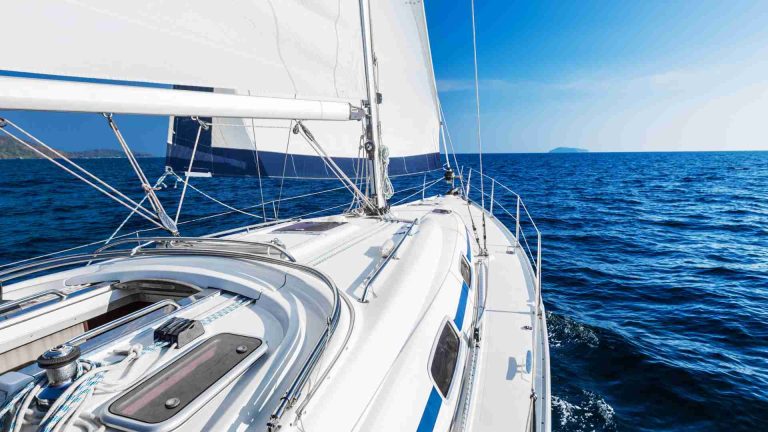
8 Differences Between Monohull and Catamaran Sailboats
There’s a certain magic to sailing, where the wind whispers ancient tales and the open sea beckons with promises of adventure. For those who’ve succumbed to its allure, the journey begins with a fundamental decision: the choice of the right sailboat. Among the constellation of options, none shines brighter than the decision between a monohull…

Demystifying “HMS” on a Ship: Meaning and Significance
The term “HMS” has long been a subject of curiosity and confusion among maritime enthusiasts and observers. Seen on the names of numerous ships, it raises questions about its meaning and significance. In this article, we aim to unravel the mystery behind “HMS” and explore its historical context within the maritime world. By delving into…
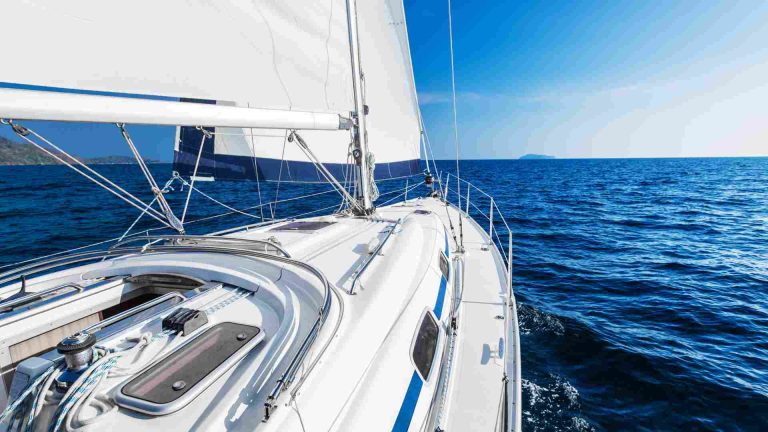
9 Types of Boat Hull Designs and Their Advantages
Imagine gliding through the crystal-clear waters, the gentle breeze kissing your face as your boat slices through the waves effortlessly. While the allure of the open sea is undeniable, what often goes unnoticed is the intricate dance between water and hull that makes this experience possible. Boat hull designs, the unsung heroes of maritime engineering,…
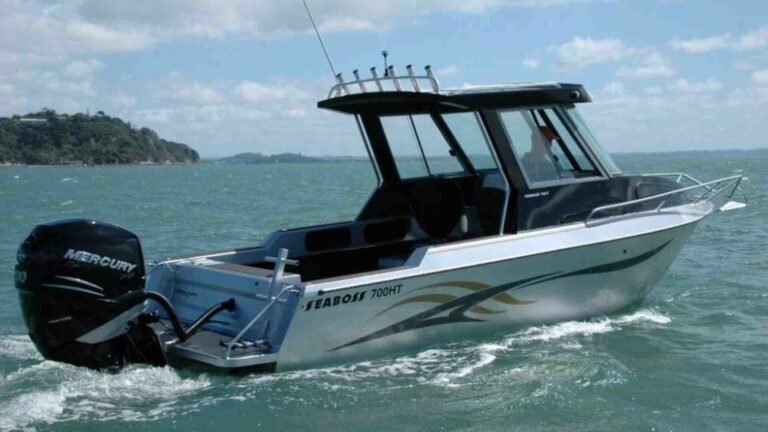
Are Sea Boss Boats Reliable & Good?
Sea Boss boats, with their distinctive lines and reputation for ruggedness, often tempt both seasoned fishermen and recreational boaters who crave adventure. But before casting off with a Sea Boss, let’s chart a course through the choppy waters of reputation and reality, asking the crucial question: are Sea Boss boats reliable and good for you?…

How Long Do Boat Batteries Last? Facts and Maintenance Tips
Boat batteries play a vital role in powering essential systems and equipment on board, making them a crucial component for any boat owner. From starting the engine to running navigational electronics and powering various amenities, a reliable and well-maintained boat battery is key to a successful and enjoyable boating experience. Understanding the lifespan of boat…
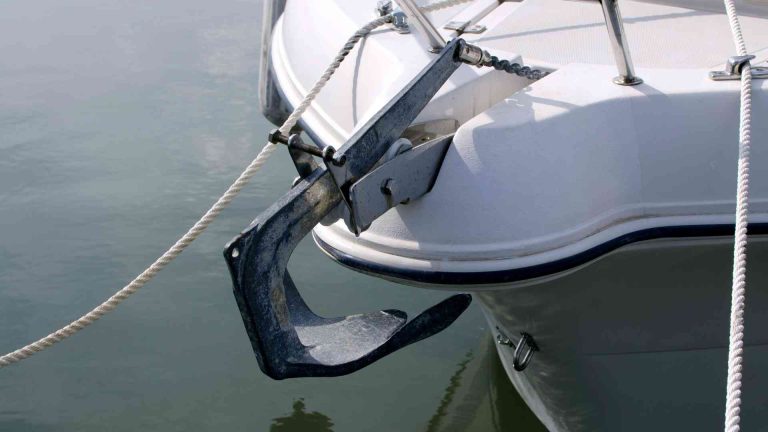
7 Types of Boat Anchors and Their Suitable Uses
In the world of boating, where the dance of waves meets the stillness of the sea, anchors emerge as the unsung heroes, holding vessels steady and secure. As the sun sets and the breeze softens, the significance of a reliable anchor becomes all too evident – it’s the guardian of rest, the keeper of safety,…

History of Sailing & Boat Types

Last Updated by
Daniel Wade
June 15, 2022
A Brief History of Ships
When and where did sailing originate? The answer to that question is threaded through our entire written history. Humans have been using various forms of boats to travel by water for longer than we have had written language. The oldest known reference to a ship was from approximately 10,000 BCE, where a carving depicted a reed rowing ship that carried twenty men. Experts believe that boats were around a lot longer than that though so far, there has been no physical proof. Ship travel is older than any other form of transportation and has been steadily improving over the millennia.
It has been determined that the first sea-worthy ships were not even built by humans but by their evolutionary predecessors, Homo Erectus, nearly 800,000 years ago. This explains how they were able to spread across the planet. The mega sailing ships and cutting edge boats of today are direct descendants of those ships built by an extinct species so long ago. It is stunning to think of how far we have come while remaining tied to the water.
Since then, ships have been made of every conceivable material, and they were used to spread people around the globe before other types of transportation like airplanes came into use. These trusty vehicles are still valued and used for warfare, commerce, and recreational sports.
They are testaments to human ingenuity and perseverance. Over the course of hundreds of thousands of years, there have been many significant changes made to the way in which boats are made, sailed, and appreciated by the general public. This article will go over the different kinds of boats, historical events, and ships of significance and also a brief glimpse of current 21st-century sailing.
Table of contents
Types of Boats and When They Originated
There have been many kinds of ships and floating transportation used throughout mankind's history. With so many years and different civilizations traveling by water to explore, trade, and wage wars, there have been a large number of boats for every conceivable purpose. As building materials improved through the ages, so have the designs of seaworthy ships.
Below is a timeline of the history of various types of boats and the advent of any significant shipping features.
Most of the earliest boats were lashed together rafts of anything that would float (e.g., reeds, bamboo, balsa, and other woods, etc.). All of these types of rafts and small boats are still in use today around the world. There is no single geographical location that can be narrowed down for when and where rafts started as a means of water transportation.
Sailing Boats
The first sailing boats recognized by historians were those used by Egyptians in 4000 BCE. They were made of reeds and traveled the Nile using masts and sails.
Invention of Planks
It was not until around 3000 BCE, the Metal Age when tools were invented that allowed for the creation of planks that could be used in boat building. Planks made it possible to construct very large ships for war and trading. The first civilizations to use these types of larger ships were the Phoenicians, Greeks, and Egyptians. Egyptians at around 2500 BCE were starting to use larger ships to travel across the ocean.
Galley Ships
A galley ship is propelled by rowing and sails. These were quite common starting in 1550 BCE until the early 19th century. Originally, they were employed most notably by the Phoenicians. War galleys were quite popular until the late 16th century, after which they began to be phased out. These ships are most known for being warships but were also used for trade and piracy. The battle of Lepanto in 1571 is history's largest naval battle involving rowing ships and involved over 400 galley ships.
Common among the Vikings, these ships also used sails and rowers but were built to be much narrower and longer. They started being constructed for long-distance travel around 1000 AD. These amazing ships were created for exploration and conquest. Made with long overlapping planks and a single large mainsail, they were easily identified and were used to travel between Scandinavia and the coasts of France, Britain, and Spain.
The Chinese junk ships employed sails reinforced with bamboo for better aerodynamics, bulkheads to separate sections, and rudders. They came into common use around 1100 AD. In 1405 and until 1433 there were many trips across the Indian Ocean made by Zheng He who worked for the Ming emperor of China. These were exceptional craft for their time. The most massive junk ship was 150 meters long and had nine different masts.
Invented in the 14th century by the Dutch, the yachts were mostly used by rich ship merchants who used these as personal celebratory vehicles. They were also used for a time by the Dutch navy.
Spanish Galleon
Unlike the galley ships that were mainly propelled forward using oars, the Spanish Galleon used enormous sails. They were so big that it took multiple people to take them in and out using thick ropes. They were used in the 16th century to transport goods to and from the Americas. These were also used by pirates and have become the iconic historical sailing ship in the media.
Steam Powered Ships
The world's first steam-powered ships were built in 1819 and were mostly used for transporting people and goods across the Atlantic Ocean.
Clipper Ships
Fast with tall masts and longboat type hulls, the Clipper boats were created in the 1800s. One of the largest, the Royal Clipper was one of the largest ships of its kind for decades, and it featured a five-masted barque.
Oceanliners
Metal ocean liners first started being used in the mid-1800s. Most of these steel-hulled ships were competing between the economic interests of the United Kingdom and Germany.
Paddle Steam Boats
Riverboats that used paddles and steam to power them up and down between river towns began to be used in the late 1800s.
Diesel Powered Ships
Around 1910 the steam-powered ships started getting converted to diesel.
Hovercrafts
The idea of a hovercraft - a boat that floated on cushions of air-filled fabric - was invented in 1955 by Christopher Cockerell.
Container Ships
Cargo ships hauling large containers were utilized starting in the 1980s, and their use and size have continued to grow in the decades since then.
Cruise Liners
Ships used specifically as get-away, recreational locations came into popularity in the 1990s, and they have been around since though their popularity has waxed and waned over the years.
Historical Sea Crossings and Events
Most of the world's continents were populated long before the invention of writing, but a few were rediscovered through sea travel. These historical sea crossings and events are responsible for some of the most important war, exploration, and trade journeys recorded throughout history.
Prior to the 15th Century
- Greenland was discovered between 980-982 by the Norse sailing explorer Erik the Red.
- Around eight years later, Erik the Red's son, Leifur, reached Newfoundland.
- The Norse continued to sail and expand their travel near Vinland by boat, including the married explorers Thorfinn Karlsefni and Gudrid Thorbjarnardóttir.
15th to 18th Century
- Christopher Columbus, starting in 1942, began several famous sea voyages that led to the discovery of the Americas.
- In 1500, Pedro Álvares Cabral sailed to Brazil.
- The Straits of Magellan are named after Ferdinand Magellan, who sailed through them from Spain to reach the South Atlantic in 1519.
- In 1563 Nicolas Barre was among a group that was the first to build ships in the Americas and sail them all the way across the Atlantic. It was a harsh journey, and only seven of their number survived.
- The first Atlantic trade route was mapped and utilized in 1566 by the West Indies fleets.
- In 1732 the Ann crossed the Atlantic from London and reached the area that is now Georgia carrying the famous James Oglethorpe.
- William Harrison sailed using the H-4 timepiece in 1764. The device on that particular voyage allowed for the creation of longitude.
19th Century
- The first steamship that sailed across the Atlantic was the SS Savannah in 1819.
- In 1865 the very first successful transatlantic telegraph cable was put in place by the SS Great Eastern.
- The Norwegians Frank Samuelsen and George Harbo were the first to row all the way across the Atlantic, and they did so in 1896.
20th Century
- In April of 1912, the RMS Titanic hit an iceberg and sank, and there was a loss of well over 1,200 lives. This is one of the most famous instances of a boat sinking and began a period during which many boats were sunk with large numbers of people on board. The increase of war and transport vessels led to many more instances with similar loss of life.
- In the years between 1914-1918 during WWI, approximately 2,100 ships sunk and 153 U-boats were destroyed.
- In WWII, 1939-1945, it was reported that roughly 3,700 ships were sunk and 783 U-boats were destroyed.
- Ann Davison, in 1952, became the first woman to sail alone across the Atlantic Ocean.
- Quite a few individuals crossed the Atlantic Ocean in the 1960s alone, but Robert Manry was the only one to do so without stopping, and he did it in 1965 using his sailboat Tinkerbelle.
- Gérard d'Aboville was the first man to row single-handedly across the Atlantic, and he did so in the year 1980.
- The first woman to single-handedly cross the Atlantic in a rowboat was Tori Murden in 1991. The entire journey took over 81 days.
Famous Ships in History
These are the ships that you have read about in history books and heard through the retelling of stories. They each played a part in creating the world that we live in today. These were all unique either due to their physical presence or a way they were used, and they are a small number of the thousands of important ships that have helped carry our species across this great globe.
Santa Maria
Originally named Marigalante, the ship sailed by Christopher Columbus was 117 feet and had three masts and a deck. It was also equipped with bombards and fire granite balls. On Dec. 25, 1492, she was run aground near Haiti. The Santa Maria was the largest of the three ships that Christopher and his crew sailed across the Atlantic Ocean. Parts of the ship are still searched for by ship-wreck hunters though pieces of what was believed to be The Santa Maria were found in the mid-2010s.
It is believed that the ship which brought the pilgrims over to Plymouth, Massachusetts, to establish the New England colony was approximately 90 feet and square-rigged. This sailing ship made its trip in 1620 bringing supplies and new settlers to the Americas from England.
U.S.S. Constitution
The warship U.S.S. Constitution was also referred to as "Old Ironsides." It is the oldest commissioned warship and was launched in 1797, and it is currently kept in Portsmouth, England. It is 204 feet and could carry around 450 crew members and 50 guns. The U.S.S. Constitution was the flagship in the Tripoli pirate war that took place in the early 1800s. There were other victories over the many years of its service that left it with the famous nickname, including the War of 1812. This vessel saw many skirmishes on the seas and remains a stalwart reminder of many wartime events.
HMS Victory
This is by far the most famous of the royal ships. It was launched in 1765 and was designed by Sir Thomas Slade. At 186 feet it was able to carry 100-guns and roughly 800 men. Although it sailed through many adventures, the HMS Victory is most known for being the flagship under the control of Admiral Horatio Nelson during the Battle of Trafalgar which took place in 1805. The ship has been partially dismantled and has been part of a museum since 1928.
RMS Titanic
Everyone knows the name Titanic. There have been books, movies, plays, and songs written about this tragedy. What had been a promising ship turned into a cautionary tale. This luxury liner was meant to cross from New York to England in 1912. It sunk early April 15th after striking an iceberg. Of the over 2,200 crew and passengers approximately 1,500 were killed. This remains one of the most tragic events of the 20th century.
This British navy ship was commissioned in 1820 and sailed all around the world. It was responsible for transporting Charles Darwin to South America among other places. During this voyage is when the naturalist developed his theory of evolution based on the species that he studied. The ship was 90 feet 4 inches and had two masts. It was intended as a naval scout and took part in other light duties. The observations that Charles Darwin made while traveling aboard the HMS Beagle changed the thread of scientific discovery.
Flying Cloud
This clipper ship had quite a history. It was 225 feet and incredibly fast. Captain Josiah Perkins Creesy set a record in 1854 for sailing from Cape Horn to San Francisco, and his speed record was not beaten for nearly 130 years. This ship is also famous for having set an early speed record for the same trip, but with the ship under the control of Josiah's wife, Eleanor Creesy.
Battleship Bismarck
This was a German battleship in WWII launched in 1939 as part of the Nazi navy. This was one of the largest class of warships made by the German army and reached a length of 792 feet, 8 inches at the waterline. It sailed for eight months during WWII and spent that time raiding allied ships in the Atlantic Ocean. In 1941 after sustaining heavy damage from allied forces, it was scuttled and sank. The wreck was later discovered in 1989 by Robert Ballard.
Sailing for Sport
Sailboats have been used for hundreds of years to break speed records around the world, and that kind of sport sailing has only increased within the last decade. This kind of pastime has evolved to the point where there are Olympic sailing classes, international sailing clubs, and even an International Sailing Federation (ISAF), which was created to make the sport safer.
The ISAF was originally called the International Yacht Racing Union (IYRU), which was created in 1907 as a way of regulating sailing rules. This allowed sailors from all over the globe to compete together since they no longer had incongruous letters of the law to follow when competing during sailing competitions. Everything from the uniform to safety precautions became standardized. In 1960 a universal set of rules was agreed upon by multiple parties, which made it easier for everyone involved in sport sailing.
There are multiple sailing disciplines that are a part of the sport today. They include but are not limited to the following.
- Match Racing
- Team Racing
- Speed Sailing
- Wave Riding
In addition, there are also several different types of courses that one might sail along during these events. These are listed below.
- Short Course Racing
- Coastal and Inshore Racing
- Offshore Racing
- Oceanic Racing
Most of these have been around for over a hundred years, and the longevity of the sport makes it attractive to a lot of new sailors because there is a rich history to become a part of and learn about. Even today, boat designers are constantly attempting to push the envelope and creating something newer and faster than any ships that have come before. That kind of drive and competition is what has allowed shipping to remain such a solid part of our species' history throughout the millennia. Sailing provides an escape for many people who are tired of a digitized, impersonal world. It is a way to connect back with nature and our own past.
Modern Era Sailing
The 'age of sail' was from 1571 to 1862, when the majority of all ships were masted vessels. In the last several hundred years, ship sailing has taken on a more recreational aspect. With the advent of airplanes, there was a much faster and safer way to travel across the oceans. That being said, they are still used for war and commerce. However, for the most part, sailing boats are relegated to sports and transportation while heavier motored ships with no need for sails have taken over most of the cross-Atlantic duties.
While most sailing is done on light craft close to the shoreline, there are still plenty of adventurous skippers who spend months or even years at sea using only sails to guide them across the oceans. People stay aboard sailboats that are docked as well going out into open waters rarely but using the living space. It is eco-friendly and less expensive than renting in some areas. No matter what you are interested in there is a masted vessel that can give you what you are looking for, whether it be exploring the seas, vacationing near the continent's shoreline, or traveling for business or pleasure across the oceans.
Now that you know more about the history of these amazing watercraft, it is easier to sit back and recognize all of humankind's collective accomplishments. There are thousands of voyages that have changed the path of human evolution and created the world that we live in today. Trade routes, wars, and exploration have all played a part in creating the countries and economies that we live within. There are few things in the history of the world that have left so deep and everlasting an impact as sailing ships and other boats.
In 2020 there is an ever-growing number of personal sailing ships available to buy on the market. Sloops, dinghies, schooners, yawls, and yachts are just a few of the ships available for people to use for going out to sea with their friends and families. In a world that is constantly shrinking with the advent of ever-increasing communication technology, being able to disconnect for a while and feel a sense of adventure is a gift.
Related Articles
I've personally had thousands of questions about sailing and sailboats over the years. As I learn and experience sailing, and the community, I share the answers that work and make sense to me, here on Life of Sailing.
by this author
Most Recent

What Does "Sailing By The Lee" Mean?
October 3, 2023

The Best Sailing Schools And Programs: Reviews & Ratings
September 26, 2023
Important Legal Info
Lifeofsailing.com is a participant in the Amazon Services LLC Associates Program, an affiliate advertising program designed to provide a means for sites to earn advertising fees by advertising and linking to Amazon. This site also participates in other affiliate programs and is compensated for referring traffic and business to these companies.
Similar Posts

How To Choose The Right Sailing Instructor
August 16, 2023

Cost To Sail Around The World
May 16, 2023

Small Sailboat Sizes: A Complete Guide
October 30, 2022
Popular Posts

Best Liveaboard Catamaran Sailboats
December 28, 2023

Can a Novice Sail Around the World?
Elizabeth O'Malley

4 Best Electric Outboard Motors

How Long Did It Take The Vikings To Sail To England?

10 Best Sailboat Brands (And Why)
December 20, 2023


7 Best Places To Liveaboard A Sailboat
Get the best sailing content.
Top Rated Posts
Lifeofsailing.com is a participant in the Amazon Services LLC Associates Program, an affiliate advertising program designed to provide a means for sites to earn advertising fees by advertising and linking to Amazon. This site also participates in other affiliate programs and is compensated for referring traffic and business to these companies. (866) 342-SAIL
© 2024 Life of Sailing Email: [email protected] Address: 11816 Inwood Rd #3024 Dallas, TX 75244 Disclaimer Privacy Policy
- Understanding the yachting world: Definitions and origins
The world of yachting and sailing is a realm of elegance, adventure, and rich history. However, the terminology surrounding these nautical activities can sometimes be confusing. From the definition of a yacht to the spelling of various sailing-related terms, this article sets out to demystify the language of the seas, offering insight into the origins and meanings of these captivating words.
Decoding the yacht: Definition and origin
A yacht is more than a vessel; it's a symbol of luxury and sophistication. Derived from the Dutch word "jacht," meaning "hunt" or "chase," yachts were initially swift, maneuverable ships used for pursuit. Over time, yachts have evolved into opulent pleasure craft enjoyed by sailing enthusiasts and the elite.
Exploring the nautical term "sailing"
Sailing goes beyond moving through water using wind power; it encapsulates a spirit of exploration and freedom. It's the art of harnessing wind energy to navigate the vast oceans, representing a harmonious relationship between humans and nature.
Read our top notch articles on topics such as sailing, sailing tips and destinations in our Magazine .
Unveiling the word "yacht" and its meaning
The term "yacht" conjures images of sleek vessels gliding gracefully across the water. Its meaning, however, extends beyond aesthetics. A yacht signifies an elegant and luxurious ship, often associated with pleasure and leisure rather than utilitarian purposes.
Yachting in focus: Definition and significance
Yachting is the activity of sailing on a yacht, encompassing both recreational and competitive aspects. It's a way to experience the allure of the open waters while indulging in the comforts and amenities offered by these sophisticated vessels.
The intricacies of yacht pronunciation
The pronunciation of "yacht" varies across regions, with some emphasizing the "ch" sound, while others opt for a softer "y" sound. This linguistic diversity adds an interesting layer to the yachting world, reflecting the global appeal of sailing.
Luxury yacht
Name or yacht? Understanding the terminology
In the yachting community, the term "name yacht" refers to a yacht that is well-known and often carries a reputation. These yachts are associated with luxury, innovation, and the personalities of their owners.
Diving into the origins of yachts
The origin of yachts traces back to the 17th century Netherlands, where they were initially used for naval purposes and later transformed into vessels for recreational sailing. Their evolution mirrors the changing perceptions of sailing from utility to leisure.
Yacht vs. yatch: Spelling matters
The correct spelling is "yacht," and "yatch" is a common misspelling. Spelling accuracy is vital, especially in maritime communication, where precision ensures clear understanding and effective conveyance of information.
Sailing terminology: What is a dinghy?
A dinghy is a small, open boat often used for short trips, transportation between a larger vessel and the shore, or for recreational sailing. Dinghies come in various sizes and are an essential part of sailing activities.
Deciphering "catamaran" and its spelling
A catamaran is a type of boat characterized by two parallel hulls connected by a deck. The spelling is "catamaran," and understanding this term is crucial for discussing and identifying different types of vessels.
Sailing's essence: The word and its meaning
Sailing embodies more than the physical act; it's a metaphor for life's journey. Just as sailors navigate challenges on the water, individuals navigate the currents of their lives, guided by the winds of opportunity and the compass of determination.
The language of yachting and sailing is rich with history and significance. From the definition of a yacht to the meaning of sailing-related terms, understanding these words enhances our appreciation of the maritime world and the timeless allure of the seas.
So what are you waiting for? Take a look at our range of charter boats and head to some of our favourite sailing destinations .
FAQs about definitions and origins

When Were Yachts Invented? Uncovering the History of Luxury Boats

Yachts have been around for centuries and have long been associated with luxury and status.
But where did these boats come from and how have they evolved over the years? In this article, we’ll uncover the fascinating history of yachts and explore how they have been used by different cultures for centuries.
From their origins to the different classes of yachts, we’ll look at the various uses people have found for these luxury boats and how they have become a symbol of status and wealth.
We’ll also explore the world of yacht racing and even take a look at some of the most luxurious yachts ever built.
So, if you’re ready to discover the history of yachts, then let’s get started!.
Table of Contents
Short Answer
Yachts were invented in the late 17th century in the Netherlands, when wealthy citizens began building large wooden sailing vessels for leisure activities.
The first recorded yacht race took place in the Netherlands in 1663, and the popularity of sailing for pleasure soon spread to other parts of Europe.
The origin of the word ‘yacht’ comes from the Dutch word jacht, meaning ‘hunt.
The Origin of Yachts
Yachts have been around since the late 16th century, when they were first used for fishing and transportation.
However, it wasn’t until the early 1700s that they began to be used for recreational activities.
This was mainly due to the increased wealth of the upper classes, who had the resources to acquire and maintain these luxury vessels.
Initially, the yachts were powered by sail, but later they were equipped with steam engines.
These early yachts were large and luxurious, and quickly became a status symbol among the wealthy.
As the popularity of yachts grew, so did their variety.
Different types of yachts were developed for different purposes, such as racing, vacationing, and cruising.
Yachts were also built with different materials, such as wood, steel, and fiberglass.
Today, yachts are still popular among the wealthy, and have become more advanced than ever before.
They can be equipped with modern amenities, such as air conditioning , internet, and satellite TV.
Yachts are also used for a variety of different activities, from racing to vacationing, and remain a popular symbol of wealth and luxury.
Early Uses of Yachts

Yachts have a long and rich history, with the first recreational sailing yacht believed to have been invented in the late 16th century.
Originally, yachts were used for fishing and transportation, as well as for leisure activities.
The earliest yachts were specialized vessels that served as fishing boats or for transportation.
They were typically small and had limited storage capacity.
As time went on, the vessels were improved and larger sizes were developed.
By the early 1700s, yachts were being used for leisure activities, such as sailing and racing.
The popularity of yachts grew in the 1700s, as they were seen as a status symbol among the wealthy.
Initially, the yachts were owned and operated by the elite and were used for recreational sailing.
At the same time, yachts began to be used for racing, with some of the earliest yacht races taking place in England.
Over the centuries, yachts have evolved into a variety of shapes and sizes, from luxurious mega-yachts to more utilitarian vessels.
Today, yachts are used for a variety of purposes, from vacationing to racing and remain a popular symbol of wealth and leisure.
Yachts as a Status Symbol
Since they first appeared in the late 16th century, yachts have been a symbol of luxury and wealth.
For centuries, the wealthy have used yachts as a way to show off their status and power.
They have also been used as a way to travel in style and enjoy the finer things in life.
In the 1700s and 1800s, the wealthy began to build larger and more ornate yachts, often with multiple levels and masts.
These vessels were often seen as a way to flaunt one’s wealth and status, and were used to travel in style and enjoy the finer things in life.
Today, yachts are still seen as a symbol of luxury and status.
They are often used to host parties, enjoy vacations, and even engage in racing activities.
Yachts of all sizes, shapes, and capabilities are available, allowing those with the right budget to enjoy a luxurious lifestyle on the open seas.
The rise of luxury yachting has also created a market for high-end services, such as yacht charters, private chefs, and concierge services.
Those who own yachts can also benefit from a wide range of amenities, from spas and gyms to fully-stocked bars and private dining areas.
Overall, yachts remain a symbol of wealth and status, and have evolved from simple fishing and transportation vessels into luxurious vessels that can be used for recreational activities.
They have become increasingly popular with the wealthy and remain a popular choice for those who want to enjoy the finer things in life.
Varieties of Yachts

Since their invention, yachts have evolved into a wide variety of shapes and sizes.
Depending on their purpose and intended use, there are now many different types of yachts available.
From luxury vessels to racing boats, there is a yacht for every type of seafaring enthusiast.
The most common type of yacht is a motor yacht, which refers to any boat with an internal combustion engine that is used for recreation and leisure.
These yachts come in a variety of sizes and styles, from small pleasure boats to large, luxurious vessels.
Sailboats are also a popular type of yacht, and are used for both racing and leisure.
Sailboats come in a range of sizes, from small dinghies to large, multi-hulled boats.
For those who prefer the speed and agility of a powerboat, there are plenty of options to choose from.
These boats come in a variety of shapes and sizes, from small runabouts to large, powerful speedboats.
Finally, there are racing yachts , which are designed for speed and performance.
These boats are typically larger and more powerful than other types of yachts, and are usually built for the specific purpose of competing in official races.
No matter what type of yacht you choose, you can be sure that they will provide an unforgettable experience.
Whether youre looking for something luxurious or a boat thats built for speed, yachts have something to offer everyone.
Popular Uses of Yachts
Yachts have been used for a variety of purposes since their invention in the 16th century.
Originally, yachts were utilized as a means of transportation and fishing, but as the centuries passed, yachts became more closely associated with luxury and leisure activities.
Today, yachts are known as a symbol of wealth and are used for a variety of purposes.
One of the most popular uses of yachts is vacationing.
Many people choose to rent or charter a yacht for a week or more and spend their time exploring the open seas.
Yachts offer plenty of space, comfort, and amenities that make them ideal for vacationing, whether its a family trip or a romantic getaway.
Yachts are also popular for hosting events, such as weddings, birthdays, corporate events, and more.
Yachts provide a unique venue for any event, with plenty of space, beautiful views, and the ability to travel to different locations.
Yachts are also used for racing.
Yacht racing is a popular sport, and many people choose to compete in races or just enjoy the thrill of sailing.
Yacht racing has been around for centuries and is still a popular sport today.
Lastly, many people choose to invest in a yacht as a status symbol.
Yachts have become a symbol of wealth, and many people purchase a yacht as a way to show off their success.
Yachts are a great way to make a statement, and they are also a great investment.
Overall, yachts have a wide variety of uses, from vacationing to racing and more.
Whether you’re looking for a luxurious way to travel, a unique venue for an event, or a status symbol, yachts are an excellent choice.
Racing Yachts

Racing yachts have been a mainstay of the luxury boat industry since the late 19th century.
Yacht races have been held all around the world, with the most famous being the Americas Cup.
Originally started in 1851, the Americas Cup is the oldest active trophy in international sport and has been held every four years since then.
Yacht racing is a thrilling and competitive sport that requires skill, knowledge, and endurance, making it a popular activity for the wealthy elite.
Yacht racing requires an incredibly well crafted vessel and an experienced crew.
Modern racing yachts are designed for maximum speed, efficiency and maneuverability.
The hulls are often made from lightweight materials such as carbon fiber, kevlar, or aluminum and the sails are made from highly specialized fabrics.
Racing yachts are often equipped with the latest navigational and communication technology, allowing them to remain in contact with their home port and other vessels during a race.
Yacht racing has become a popular spectator sport, with events being held in some of the most beautiful locations around the world.
From the Mediterranean to the Caribbean, yacht racing has become a spectacle of speed and skill, with crews pushing their vessels to the limit in the pursuit of victory.
For those looking to experience a thrilling and luxurious activity, yacht racing is an activity not to be missed.
With its rich history, intense competition, and beautiful setting, yacht racing is sure to be an unforgettable experience.
Luxury Yachts
Luxury yachts have always been a symbol of wealth and leisure, beginning with their invention in the late 16th century.
Yachts were originally used as fishing boats and transportation vessels, but by the early 1700s, seafaring aristocrats began to use them for leisure activities.
It wasnt long before yachts began to be seen as a status symbol, and it wasnt long before they were in the possession of many of the wealthiest people in the world.
Today, luxury yachts are used for a variety of activities, from vacationing and cruising to racing and fishing.
They come in all shapes and sizes, from the classic sailing yacht to the sleek, modern motor yacht.
They can be equipped with all the comforts of home, from luxurious spas and state-of-the-art entertainment systems to private helipads and expansive decks.
No matter the size or style, luxury yachts have always been a symbol of wealth and leisure, and that is unlikely to change anytime soon.
Whether youre looking for a luxurious vacation aboard a private yacht or a chance to participate in a race, luxury yachts will always be a popular choice.
Final Thoughts
From humble beginnings as a simple fishing and transportation vessel, yachts have come a long way to become a status symbol of wealth and leisure.
The variety of yachts today is astounding, from the luxury vessels of the wealthy to the race boats of the daring.
Yachts can be used for everything from vacationing to racing, and remain a popular symbol of wealth and leisure.
Now that you know the history of yachts, why not take a closer look at the different kinds of yachts out there and find the one that’s right for you?.
James Frami
At the age of 15, he and four other friends from his neighborhood constructed their first boat. He has been sailing for almost 30 years and has a wealth of knowledge that he wants to share with others.
Recent Posts
Does Your Boat License Expire? Here's What You Need to Know
Are you a boat owner looking to stay up-to-date on your license requirements? If so, youve come to the right place! In this article, well cover everything you need to know about boat license...
How to Put Skins on Your Boat in Sea of Thieves? (Complete Guide)
There is a unique sense of pride and accomplishment when you show off a boat you customized to your exact specifications. With Sea of Thieves, you can customize your boat to make it look like your...

From Sails to Motors: The History of Yachting
How yachting went from a necessity to a lifestyle.
As a boating enthusiast like us here at Van Isle Marina, you probably spend a lot of time thinking about boats, looking at boats, and being on boats at every opportunity you can seize. But have you ever wondered how today’s luxury vessels came to be?
What was there before the motorboat grew to become a luxury yacht, which further grew to become a superyacht? If you’re as curious as we were about how, when, and where the yachting lifestyle evolved, read on for our brief guide to the history of yachting.
Not sure what makes a yacht a yacht in the first place? Review our Yacht Sizes, Styles, Types & Categories post as a refresher. In short, a yacht is mainly considered to be any type of sea vessel used strictly for recreational or pleasure purposes like cruising, entertaining, water sports, or fishing. There is a wide variety of sea vessels that are classified as yachts, with the term largely representing any vessel used recreationally that is large enough to have some form of sleeping quarters for overnight trips, as well as a kitchen and bathroom.
Today’s modern luxury yachts have come along way. Let’s take a look at where it all started.
Origin of Yachting
So, where did the term yachting come from? Originally called jachtschips (hunting boats), yachts were invented by the Dutch Navy in the 14 th century to catch pirates and thieves quickly in shallower waters where larger ships couldn’t be sailed.
It wasn’t long until wealthy merchants and ship owners began using these smaller and speedier boats to sail out to celebrate their returning merchant ships. Sailing yachts also became popular with royalty, and it quickly became chic to use them for pleasure cruises and inevitably, for racing. English yachting is said to have officially begun when King Charles ll sailed the Mary to Britain following his return from exile in the Netherlands.

A 20 metre (66 foot) craft, the Mary inspired Charles and his brother James, the Duke of York, to construct more yachts and begin racing. They raced for sport for the first time in 1662 on the River Thames on a 100-pound wager.
Yachting Gains Traction
After a while, yachting slowly became fashionable among the wealthy, with the first social Yacht Club (the Water Club) in Cork, Ireland, being established in 1720. It was first used as a coast guard style organization. In the Water Club, races were actually chases, where the fleet of vessels “raced” to catch a nonexistent enemy—a nod to the yachts’ original crime-fighting purpose.

These Pilot Schooners were designed to guide the cargo-carrying Clippers to safe harbour, and in order for the crew to make a living guiding cargo ships to shore, they had to be the fastest.
The New York Yacht Club (NYYC) began in 1844 and the first racing schooner, the 30.78 metre America sailed across the Atlantic. She was turned down from the races in England, but joined in a race around the Isle of Wight with 14 yachts from the Royal Yacht Squadron, winning the Hundred Guinea Cup , known today as America’s Cup. Using this new design, the NYYC won the cup every year, from 1870-1983.
Yachts Get Bigger and Faster
After 1850, when steam-powered and internal combustion engines began to replace sails as the main power source, larger yachts and paddle wheel boats were developed as pleasure craft for long-distance cruising. By the second half of the 20 th century, the majority of yachts relied on internal combustion engines (motor yachts), having moved away from using sails as auxiliary power.
Governance of the Yachting Industry
In 1907, yacht racing had caught on to the point where a governing body was required to create a universal set of rules and regulations for the sport since each country and region had their own set of rules—leading to much confusion. And so the International Yacht Racing Union (IYRU) was created in Paris. It was later renamed to the International Sailing Federation in 1996. Around this time, international racing really took off, splitting yachting into the two main factions we see today—racing and cruising.
Yachting Today
Today, the yacht has continued to develop with advances in technology and materials depending on the intended use – from long-range cruising, to fishing and watersports, to being used as a home away from home. Although wooden boat purists will still insist on a wooden hull, the vast majority of today’s hulls are created from much lighter materials like fibreglass, and designs vary according to the make and model of the vessel.
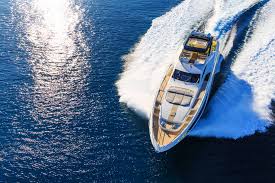
Among other advances are the multihull design (catamaran/trimaran) and special features such as computer controlled winches on sailing yachts, an auxiliary engine to power the alternator, wind, water, and solar powered generators, GPS systems, radar, electricity, tender storage, joystick steering, and much more.
On top of these features, today’s luxury yachts have endless amounts of finishing touches that we are sure would have impressed the original yachtsmen, including leather interiors, teak decking, laundry machines, kitchen appliances, and the list goes on.
Whether you’re interested in a classic motor yacht, flybridge, a larger luxury rig, or something in between for your yachting lifestyle, come visit us at Van Isle Marina where we offer a wide range of new and used models as well as a fully secure maintenance and storage facility .
Blog Headlines
- What is a Yacht? (History, Types of Yachts, Styles and Sizes) January 15, 2024 - 10:35 am
- Essential Off-Season Haul-Out Services for Your Boat August 10, 2023 - 4:34 pm
Media and Galleries
Click HERE for more videos and photo galleries including our Historic Galleries .
Click HERE for a photo tour of our marina.


Yacht : modern meaning of the term and types of boats

The etymology of the term yacht comes from the Dutch word ‘jacht’, which was used in the past to define the fast sailing vessels used to hunt down pirates along the coasts of northern Europe.
Today, the term ‘yacht’ is used to describe all recreational vessels, whether sailing or motor-powered, with at least one cabin that allows the crew to sleep on board.
There is no established definition for the length of this family of boats, but common usage tends to define a yacht as a vessel longer than 33 feet, or about 10 meters.
As mentioned above, a yacht may be equipped with sailing, motor or mixed propulsion. It can have more than one hull, and if it exceeds 25 meters it also deserves the definition of superyacht . When a yacht is over 50 meters it is called a megayacht and, more and more frequently, when it exceeds 100 meters it becomes a gigayacht.
A yacht normally flies a flag that corresponds to the country where the vessel is registered, not least because, if it does not, it may be captured and taken to the nearest port for ‘flag survey’. As far as international maritime law is concerned, the yacht is considered in all respects to be the territory of the country of the flag it flies, to whose sovereignty the crew is subject.
A yacht flying the flag of a country, unless there is well-founded suspicion of illegal activity, can only be stopped for inspection by the military vessels of that country. When a yacht enters the territorial waters of a country other than that of its flag, it is obliged to fly a courtesy flag.
This is tantamount to a declaration of submission to the navigational laws of the country in which it is sailing.
Sailing and motor-powered yachts
The first major distinction is between sailing yachts and motoryachts. The current worldwide spread of these two families has shifted decisively towards motor yachts, which make up about 75% of the total sailing fleet.
Progress and design have produced many different categories of motor yachts, so let’s discover them together.
Motoryachts
Seen from the stern, a flybridge yacht is often equipped with a “beach club”, a platform that facilitates access to the sea and on which water toys are placed or simply used for diving. A staircase, or even two symmetrical staircases, leads from this platform to the main deck. Sometimes there is a “garage” between these two staircases to house the engine room, a tender and other on-board equipment.
The main deck is characterized by the presence of a helm station, inside of which a large open-space salon houses settees and a galley. The helm station often leads below deck, also known as the lower deck, where the sleeping quarters, or cabins, are normally located.
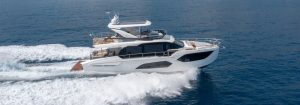
The foredeck often has a large sundeck bordered by a “bowplate” for hauling anchor. The bow is often “fenced in” by the handrails, which are vital grips for safety at sea.
Let’s get to why a yacht is called a flybridge. The flybridge is an upper deck, open 360 degrees and often covered by a hard-top, a roof usually made of fibreglass. The flybridge usually has an additional helm station to steer from a more panoramic position. An additional galley is often located on the flybridge, as well as additional lounge seating and sun decks.
Open Yachts
An open yacht has no flybridge and its main deck is commonly all open. The helm station can frequently be sheltered by a T-Top. Below deck, depending on the length of the yacht, there are living spaces for the crew which may include dinette, cabins and facilities. Open yachts can be walk-around, i.e. with the possibility for passengers of walking freely around the perimeter of the boat, or they can have an enclosed bow and thus have a raised deck.
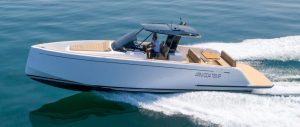
A coupe yacht is a yacht without a flybridge, characterized by a sporty design, with the main deck open aft. Very often it has a sunroof and is always equipped with side-decks connecting the stern to the bow. It is a vessel that, depending on its size, is suitable for medium to long-distance cruising.
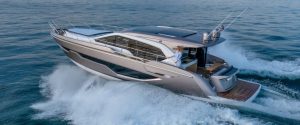
This is an important type of yacht, which has its origins on the American East Coast where it was used to catch lobsters. It has a romantic, sometimes vintage aesthetic, and is endowed with sinuous lines that, for some, are evocative of the 1950s. Very suitable for cruising and conviviality, thanks also to a large sofa in the cockpit, the lobster is an iconic boat that offers plenty of comfort and space below deck for at least one cabin and one head.
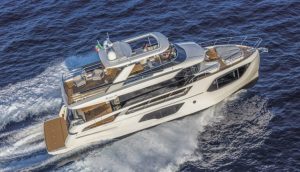
The trawler is essentially a yacht for owners who want to spend a lot of time on board. This is why interior volumes are maximized and the upper deck is always present. Also part of the trawler family are the famous Menorcan boats, inspired by the llaüts of the Menorca island..
Increasingly popular among motor yachts, too, is the multihull, due to its inherent features of stability and capacity. In most cases it is a catamaran designed for long stays at sea.
Sailing yacht
Sailing yachts are vessels where propulsion should mainly rely on the power transmitted by the wind. In the past, sailing yacht engines were low-powered and mainly used for entering and leaving ports, but today, for obvious reasons of practicality and ease of use, they have enough power to make the sailing yacht cruise at a speed at least equal to its theoretical hull speed. This means that sailing yachts can be used efficiently even in the total absence of wind.
A sailing yacht can be rigged in many different ways, these being the most common in modern times:
Sloop : this is the most common rigging on modern boats, characterized by the presence of a single mast with a mainsail and a jib or genoa. Sloop rigging has become popular over the years because it is the easiest to handle with a small crew and also offers the best ease of use/sailing performance ratio.
Cutter : Widely used for long distance sailing, it is characterized by the presence of a mainsail and two jibs rigged on a single mast. Normally the two jibs are a genoa and foresail that are used individually, depending on the weather conditions.
Ketch : this is the most commonly used rig on two-masted sailing yachts, with a mainmast, rigged with a mainsail and genoa, and a mizzenmast, forward of the rudder shaft, rigged with a single mainsail. The splitting of the sails makes this type of yacht suitable for sailing in bad weather.
Yawl : exactly the same as a ketch but with the mizzen mast located aft of the rudder shaft.
Sailing yachts can be monohulls or multihulls, i.e. catamarans or trimarans, but in all cases they can be divided into these categories:
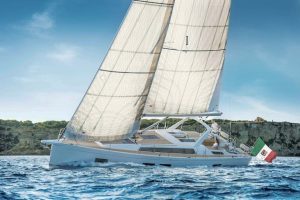
Easy to handle and with plenty of space above and below deck, this type of yacht is normally characterized by an unbalanced length/width ratio favouring the latter, a small sail area and more powerful than average engines.
The interiors are fully equipped and sophisticated, with each cabin often having its own en-suite head.
The deck plan and sailing equipment are simplified, often electrified and minimal.
Cruiser-Racer

This yacht, while still featuring a luxurious and complete interior, also has all the equipment needed for sail fine-tuning and a generous sail area.
This is a category where special attention is paid to both the overall weight of the boat and the hull shape.
The hull lines are in fact designed to enhance performance and, inevitably, this results in a slightly smaller interior than that of pure cruising yachts of the same length.
Racer-Cruiser
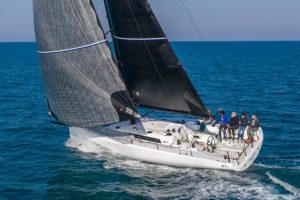
The owner who buys this type of yacht has already competed in club competitions and now wants to engage in higher level racing. The hulls are light and can sometimes be made of carbon, and all the sail adjustments are fine-tuned to achieve maximum performance.
The deck plan is definitely designed for crewed racing and the sail area/displacement ratio is unbalanced in favour of the former, making this yacht more difficult to handle with a smaller crew but, conversely, capable of performance similar to a pure racing yacht.
A pure racing yacht is a sailing yacht built exclusively for racing. Free from any commercial constraints, it is built according to the type of race to be competed in and, above all, the rating to be obtained. The interiors of this boat are minimal. This yacht is capable of planing and sailing upwind at very low wind angles, but is almost never used for recreational purposes.

Leave a Reply Cancel reply
Your email address will not be published.
Save my name, email, and website in this browser for the next time I comment.
You might be interested in
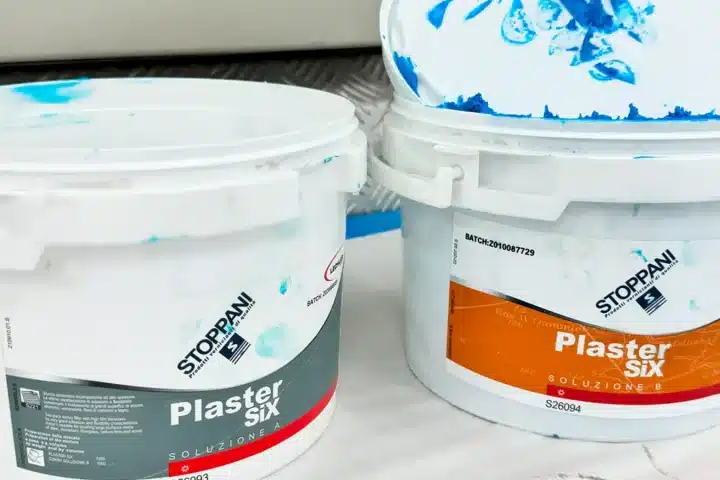
Boat filler: what characteristics for the best product
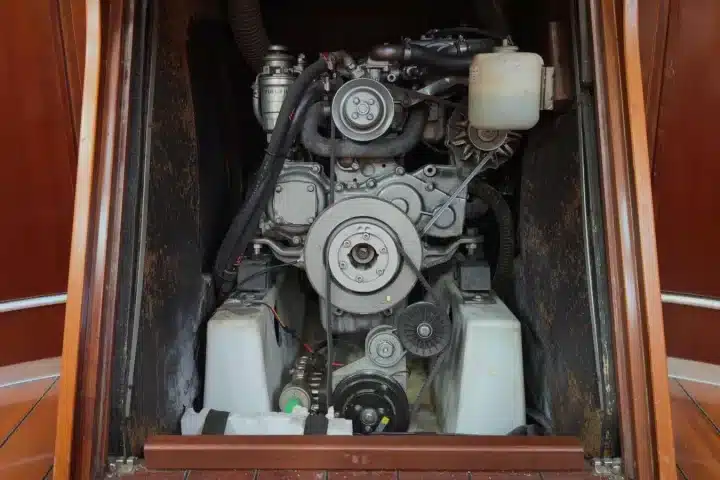
Boat Engine Maintenance: complete guide and useful tips for DIY
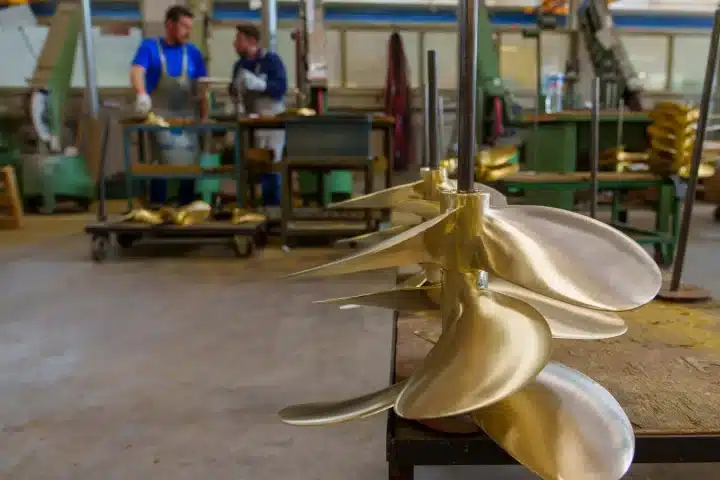
Boat Propellers, the ultimate guide to choosing the right model
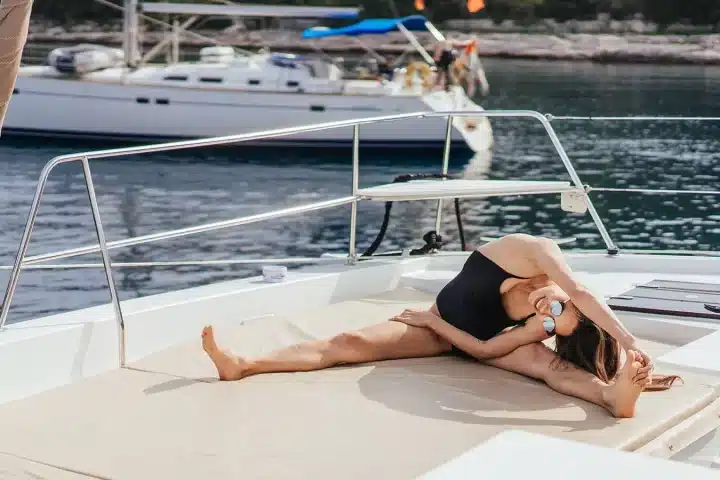
Exercising on a boat: a brief guide to staying fit without setting foot on land
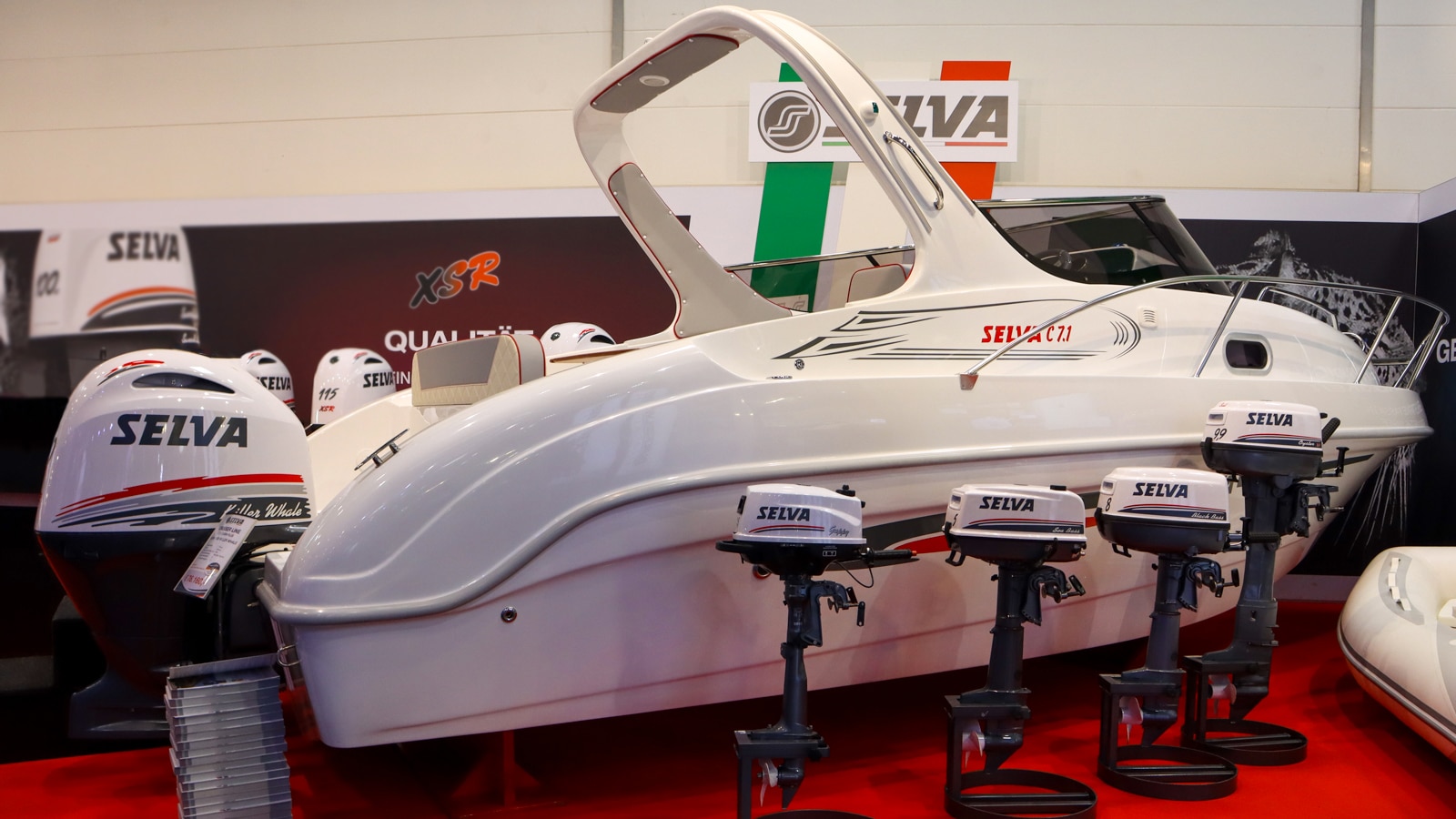
Selva C.7.1 Cabin Plus: comfort combines with practicality
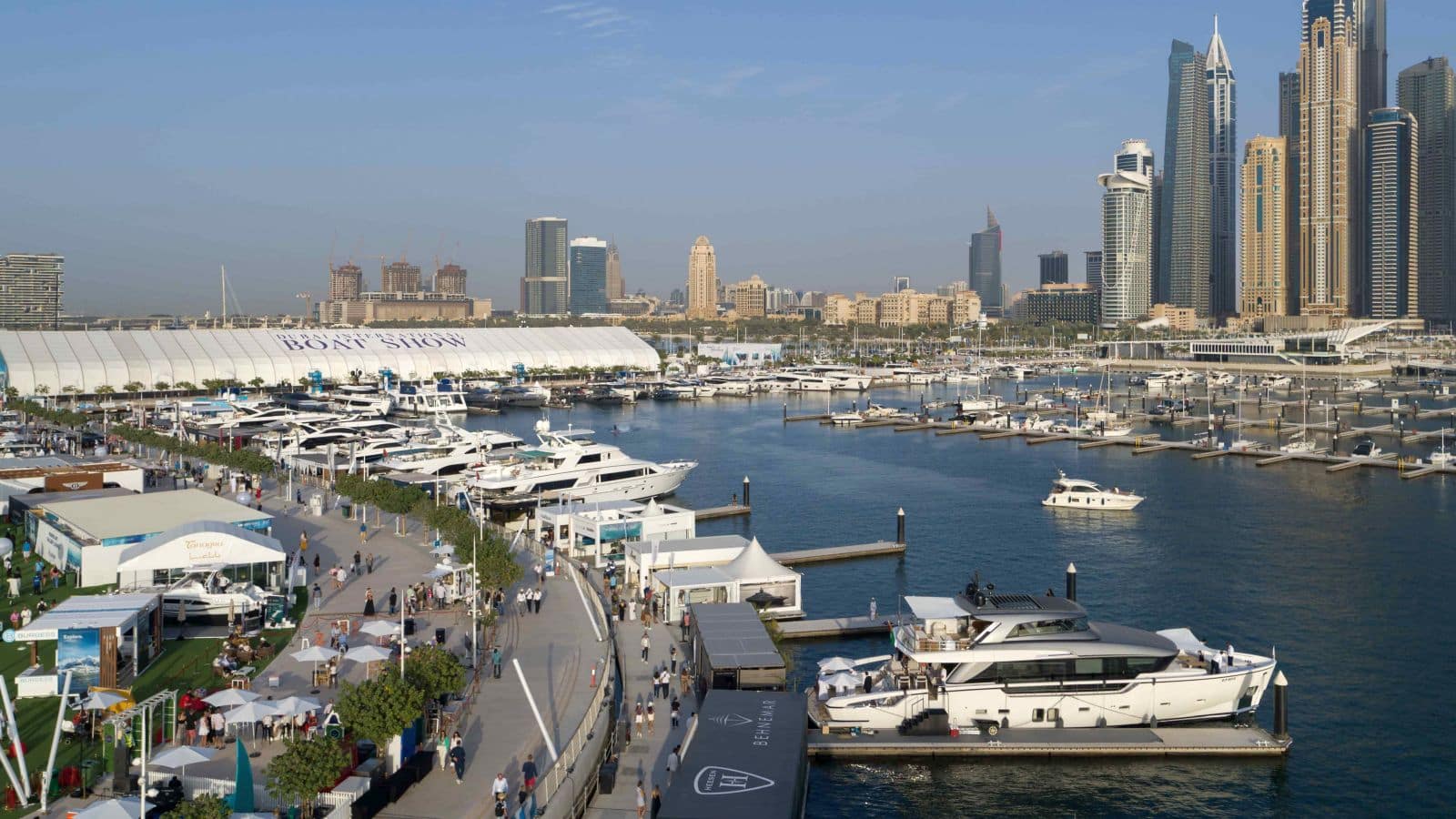
All set for the Dubai International Boat Show 2023

To provide the best experiences, we and our partners use technologies like cookies to store and/or access device information. Consenting to these technologies will allow us and our partners to process personal data such as browsing behavior or unique IDs on this site and show (non-) personalized ads. Not consenting or withdrawing consent, may adversely affect certain features and functions.
Click below to consent to the above or make granular choices. Your choices will be applied to this site only. You can change your settings at any time, including withdrawing your consent, by using the toggles on the Cookie Policy, or by clicking on the manage consent button at the bottom of the screen.
Subscribe For Latest Updates
Sign up to receive the best of Yachting News, sea trials, boat review and world premieres .
The only ADVERTISING FREE newsletter
From Sailors to Socialites: The Evolution of Yacht Culture
Table of Contents
History of Yacht Culture
To uncover the origin and evolution of yacht culture, delve into this section discussing its history. Gain insight into the sails-to-socialites narrative by learning about the origins of yachts, and exploring the development of yachting as a competitive sport.
Origins of Yachts
The roots of the yacht culture date back to the 17th century. Rich merchants and aristocrats began buying luxurious boats, known as yachts, for leisure and sailing races. In 1661, King Charles II of England commissioned a pleasure yacht. 1815 saw the first official yacht racing event in England, which became trend among the wealthy.
The America’s Cup race in 1851 introduced sleeker, faster yachts with advanced design.
The word “yacht” is from the Dutch “jacht” , meaning “hunt”. It was originally used for light vessels that sailed quickly to catch pirates and smugglers.
The biggest privately owned yacht in the world is owned by Russian billionaire Roman Abramovich . It is called Eclipse and is 162.5 meters long.
It looks like yacht owners are taking their leisurely sailing to another level with cutthroat competitions.
Development of Yachting as a Competitive Sport
Sailing has been a thing since ages ago, but it wasn’t until the late 1700s that yachting as a competitive sport started to emerge. Here’s a look at its development.
Back in 1660 , the first yacht club was founded in Cork, Ireland. King George II built on this by hosting schooner races in 1720 . The America’s Cup made its debut in 1815 and the IYRU was formed in 1898 . Finally, yachting was included in the Olympic Games in 1924 .
Other folks have different opinions about when yachting got competitive. In England in the 1800s, people would race their fishing vessels between harbors. This led to competitions between those with private sailing ships.
No matter how it began, yachting turned into a global phenomenon. It still has the competitive edge today with events like the America’s Cup and Olympic sailing. Plus, owning a yacht is even better with a friend who has one.
The Rise of Yachting as a Leisure Activity
To understand how yachting became a popular leisure activity, delve into ‘The Rise of Yachting as a Leisure Activity’ with ‘Yacht Clubs and Social Status’ and ‘The Golden Era of Yacht Parties’ as solution briefly.
Yacht Clubs and Social Status
Yacht Clubs are now a sign of luxury and high social standing. These exclusive clubs offer a lavish way to explore the sea. Membership can be limited, and pricey. But they provide VIP access to events like regattas and ocean races, as well as a unique boat community.
Yacht Clubs are more than just boats. They offer fine dining, spas, bars, and even accommodation – a lifestyle for those who can afford it. Yacht owners show off their boats with pride and host amazing parties.
Yacht racing is becoming popular among members. This sport needs top-notch team coordination and the thrill of competing with other experts from around the world.
To get the prestige and benefits of a yacht club , it could be worth investing in a top-notch boat. Fractional ownership is a good option. This involves multiple owners sharing maintenance costs.
The Golden Era of Yacht Parties
The affluent class in the early 20th century became infatuated with yachting parties, triggering a new era of leisure. These parties were unlike traditional social gatherings – they took place on elite vessels, with music, food and drinks flowing. This set a standard of luxury that lives on today.
Shipbuilders created sleeker, more intricate yacht designs for the growing demand. And boat races, regattas and other events featured the most expensive boats ever made.
Yachting now has little resemblance to its earlier days. Luxuries like on-board spas, Jacuzzis, gourmet kitchens, and cinemas make it an all-in-one experience.
Anyone can enjoy this unique escapade with excellent service providers and tour operators offering high-end cruises to places like Monaco and St. Tropez. But if you really crave exclusivity, try the yacht club on a private island – if you can afford it!
The Current State of Yacht Culture
To understand the current state of yacht culture and to look ahead into the industry’s future, delve into exciting sub-sections – modern yacht design and technology, and the future of yacht culture encompassing sustainability and accessibility.
Modern Yacht Design and Technology
Yachting has been revolutionized by modern design and tech. The latest yachts boast sleek, contemporary looks and lightweight materials like carbon fiber. Plus, they’re packed with high-tech features like 3D printing, CAD technology, composite materials, and automated systems.
Onboard, you’ll find everything from swimming pools to helicopter pads, cinemas, full-sized spas, and grand pianos. Plus, new eco-friendly tech helps reduce their environmental footprint.
So don’t miss out on this unique opportunity to experience a luxurious voyage with the latest in yacht design and tech. Book your next journey now!
The Future of Yacht Culture: Sustainability and Accessibility
Yacht culture’s future is linked with sustainability and accessibility. People have become aware of the environmental impact of their actions, including those in the yachting industry. Technology now makes it easier to be eco-friendly while still having a luxurious experience. More people are getting to experience yacht culture due to increased accessibility.
Sustainability is making great progress. For example, Oceanco recently launched a superyacht with an innovative electric propulsion system. Technology is shaping the future of yachting in terms of sustainability.
Accessibility has become a priority in yacht culture. People want to share their experiences and allow others to join them. Many companies now offer budget-friendly charters.
Exclusivity was once everything, but not anymore. The tragic sinking of RMS Titanic in 1912 highlighted this – there were not enough lifeboats, and only wealthy passengers had access to them. This event has improved safety aboard ships.
In conclusion, yacht culture’s future with sustainability and accessibility aims to improve socio-economic equality, environmental conservation, and tourism. It is providing job opportunities and other benefits for indigenous communities around the world. It also caters hospitality services for all classes. From Monaco to Ibiza, yacht culture’s destinations have something for everyone.
The Evolution of Yacht Culture Across the Globe
To understand the evolution of yacht culture across the globe, delve into yachting in Europe, North America, and Asia. From the Mediterranean to the Baltic, Europe has a rich history of yachting. In North America, yachting is prominent in popular destinations such as the Caribbean and New England. Meanwhile, Asia’s yacht culture has burgeoned in countries like Dubai and Phuket.
Yachting in Europe: From the Mediterranean to the Baltic
Yachting is evolving across Europe! From the Mediterranean to the Baltic, there’s diverse scenery for both competitive sailing and leisure cruising.
In search of beauty, yachtsmen have gone to explore exotic Aegean islands, Croatia’s stunning coastline, and Finland’s crystal blue waters. During summer, the northern sea’s chilly winds offer a great challenge for sailors .
The Amalfi Coast in Italy is gaining popularity. Here, picturesque hillside vineyards and white sandy beaches create a memorable backdrop. Plus, Sardinia is a great place to discover culture and pristine landscapes.
The Azimut Benetti Group based in Viareggio is one of the world’s largest yacht builders . They even make boats for celebrities like Jay-Z and Jennifer López!
Yachting is now America’s favorite pastime – from the Caribbean to New England.
Yachting in North America: From the Caribbean to New England
Yachting fans in North America can explore various lush spots. From the Caribbean’s warmth and culture to New England’s scenic regions. The table below shows the popular sites, amenities, and marina fees for yachting in North America.
There are also many unique, undiscovered places . From Maine’s small towns to Canada’s rugged coasts. In ancient times, boats were mainly used for transportation and fishing. It wasn’t until the mid-19th century that recreational boating became famous among affluent Americans seeking new experiences in nature. Nowadays, yachts are seen as status symbols by many prosperous individuals in North America and beyond.
Whether you’re staying in lavish waterfront accommodations or sailing your own vessel, yachting culture will keep changing – as technology advances and people’s lifestyle preferences change. And if you want to feel rich and famous on a budget, Phuket is the place for you.
Yachting in Asia: From Dubai to Phuket
The yachting scene in Asia is booming! Dubai and Phuket are two of the most popular spots for yacht enthusiasts. Dubai’s marinas have some of the most luxurious superyachts in the world. Phuket’s bays are filled with secret coves and exclusive beaches.
Singapore is now a hub for luxury yacht events and exhibitions. Bali’s lush green scenery and pristine beaches draw many yachts. Japan’s Okinawa archipelago is a hidden gem. It’s clear waters are home to coral reefs and marine life. Fishing villages give an insight into local culture.
Consult cruising guides or professional yacht service providers before setting sail. Safety should always be a priority. Rich people can have problems too – that’s what yacht culture proves .
Conclusion: The Role of Yacht Culture in Today’s Society.
Yacht culture is key in today’s luxurious lifestyles. From its roots in naval exploration to sailing for fun, and now being a symbol of affluence, the evolution of yachting is remarkable. It’s become popular as a status symbol and owning one is connected to prestige, exclusivity, and access to the high life. This trend looks set to stay in the 21st century.
Yachting is popular for those with the funds, and it’s not just sailing anymore; it’s a scene, with networking, cocktail parties, and unique events on the vessels.
Yachting wouldn’t be what it is without centuries of nautical advances . Explorers sought adventure and knowledge, such as Columbus’ 1492 voyage to America . Navigational systems cut travel time across oceans. Yacht culture has moved from being used for transportation to being a representation of wealth and luxury .
It’s a testament to human ingenuity and creativity to adapt and make new experiences on land and sea.
- More from M-W
- To save this word, you'll need to log in. Log In
Definition of yacht
(Entry 1 of 2)
Definition of yacht (Entry 2 of 2)
intransitive verb
Examples of yacht in a Sentence
These examples are programmatically compiled from various online sources to illustrate current usage of the word 'yacht.' Any opinions expressed in the examples do not represent those of Merriam-Webster or its editors. Send us feedback about these examples.
Word History
obsolete Dutch jaght , from Middle Low German jacht , short for jachtschip , literally, hunting ship
1557, in the meaning defined above
1836, in the meaning defined above
Phrases Containing yacht
Articles related to yacht.

Why does English have so many silent...
Why does English have so many silent letters?
Inexplicable silent letters, explained
Words of the Week - March 4
The words that defined the week ending March 4th, 2022
Dictionary Entries Near yacht
yacht chair
Cite this Entry
“Yacht.” Merriam-Webster.com Dictionary , Merriam-Webster, https://www.merriam-webster.com/dictionary/yacht. Accessed 25 Mar. 2024.
Kids Definition
Kids definition of yacht.
Kids Definition of yacht (Entry 2 of 2)
from obsolete Dutch jaght (now jacht ), short for jachtschip, literally, "hunting ship"
More from Merriam-Webster on yacht
Thesaurus: All synonyms and antonyms for yacht
Nglish: Translation of yacht for Spanish Speakers
Britannica English: Translation of yacht for Arabic Speakers
Britannica.com: Encyclopedia article about yacht
Subscribe to America's largest dictionary and get thousands more definitions and advanced search—ad free!

Can you solve 4 words at once?
Word of the day.
See Definitions and Examples »
Get Word of the Day daily email!
Popular in Grammar & Usage
8 grammar terms you used to know, but forgot, homophones, homographs, and homonyms, commonly misspelled words, how to use em dashes (—), en dashes (–) , and hyphens (-), absent letters that are heard anyway, popular in wordplay, the words of the week - mar. 22, 12 words for signs of spring, 9 superb owl words, 'gaslighting,' 'woke,' 'democracy,' and other top lookups, fan favorites: your most liked words of the day 2023, games & quizzes.

- Cambridge Dictionary +Plus
Meaning of yacht in English
Your browser doesn't support HTML5 audio
- They spent their annual holiday on a chartered yacht in the Caribbean .
- He spent three days adrift on his yacht.
- His eyes were fixed on the distant yacht.
- If they can afford a yacht, they must be rolling in it.
- She sailed around the world single-handed in her yacht.
- cabin cruiser
- dragon boat
- rubber dinghy
yacht | American Dictionary
Examples of yacht, collocations with yacht.
These are words often used in combination with yacht .
Click on a collocation to see more examples of it.
Translations of yacht
Get a quick, free translation!

Word of the Day
doctor's orders
used to mean that you must do something because your doctor has told you to do it

Paying attention and listening intently: talking about concentration

Learn more with +Plus
- Recent and Recommended {{#preferredDictionaries}} {{name}} {{/preferredDictionaries}}
- Definitions Clear explanations of natural written and spoken English English Learner’s Dictionary Essential British English Essential American English
- Grammar and thesaurus Usage explanations of natural written and spoken English Grammar Thesaurus
- Pronunciation British and American pronunciations with audio English Pronunciation
- English–Chinese (Simplified) Chinese (Simplified)–English
- English–Chinese (Traditional) Chinese (Traditional)–English
- English–Dutch Dutch–English
- English–French French–English
- English–German German–English
- English–Indonesian Indonesian–English
- English–Italian Italian–English
- English–Japanese Japanese–English
- English–Norwegian Norwegian–English
- English–Polish Polish–English
- English–Portuguese Portuguese–English
- English–Spanish Spanish–English
- English–Swedish Swedish–English
- Dictionary +Plus Word Lists
- English Noun
- American Noun
- Collocations
- Translations
- All translations
Add yacht to one of your lists below, or create a new one.
{{message}}
Something went wrong.
There was a problem sending your report.

- We Are Hiring
- Naval Architecture
- Installations
- Seakeeper Extended Warranties
- Naval Architecture, Engineering & Construction

- All Speed 24VDC Fins Pricing
- Interceptor Pricing
- All-Speed Fin Stabilizer
- Custom-Shaped
- Jetboats Stabilization
- Stabilization
- Marine Electronic Innovations
- Yacht Management
- Antifouling Coatings
- Air Conditioning & Refrigeration
- Fiberglass, Gelcoat, & Paint
- Mechanical & Electrical Services & Repairs
- Haul Out & Dry Dock Services
- Schedule Demo Boat Ride
- Starboard Yacht Interactive Assessment
- Marine Electronics
- Seakeeper 1
- Seakeeper 2
- Seakeeper 3
- Seakeeper 5
- Seakeeper 6
- Seakeeper 9
- Seakeeper 16
- Seakeeper 18
- Seakeeper 26
- Seakeeper 35
- Fins & Interceptors
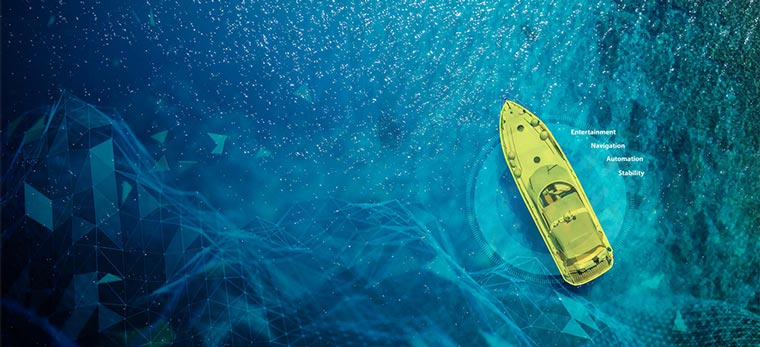
The History of the Yacht
For those of us interested in boats and sailing, we’ve heard the term “yacht” more times than we can count. Yachts are very common today, with many people owning their own boats for pleasure or sport and numerous yacht clubs to be found near any large body of water. But have yachts always been this popular? And where did they first emerge?
We wouldn’t be a top provider of yacht services in Fort Lauderdale, FL if we weren’t knowledgeable in the history of yachting. If you’ve ever wondered about where yachts came from, take a trip back in history with us.
Yachting origins
Sailing has been around since some of the world’s earliest civilizations. Egyptians back in 3,000 BC used to build impressive boats to place next to royal bodies to carry them to the afterlife. In the 14th century, the world’s first yachts came about, also because of royals.
Rich Dutch merchants used to use small and fast-moving boats for celebrations when their merchant ships returned, but began using these “jaghts” to take friends out for fun, as well. This caught on and truly became a status symbol when Charles II of England was awarded a yacht, named Mary, after returning to the throne from exile.
Charles II is considered the world’s first yachtsman, as he built more than 20 yachts over the course of his life and spent a lot of time researching navigation and naval architecture. His brother also joined in, and the two became dedicated to sailing for personal pleasure.
The brothers created the first regatta, a 40-mile race on the River Thames, in 1661 when they raced their two boats. The fun from the race was contagious, birthing a new “sport of kings.”
Not just for royals
Given their expensive nature, large, luxurious yachts were typically reserved for those of royal descent. However, this began to shift near the 1700s when wealthy non-royals began purchasing or building their own yachts. The first yacht club was the Cork Water Club in Ireland, established in 1720. Soon after, yacht clubs became prevalent.
Over in America, the New York Yacht Club (NYYC) was born in 1884. The members decided to build a pilot-style schooner, one of the fastest designs available at the time. Pilot schooners were boats designed to race out to guide cargo ships back to port. The first one there got the job, so they had to be fast.
When the NYYC completed the boat, deemed the America, they sailed to England and participated in regattas there. The America won the club the Hundred Guinea Cup, and they continued to compete for the title for more than 100 years after.
Modern yachting
As time went on, more and more people became interested in owning boats for pleasure. While yachts are still largely used by the wealthy, they have become much more affordable. Owning a yacht is not as big of a status symbol as it was in the 1600s.
There are many types of yachts now, including day sailing yachts, weekender yachts, cruising and luxury sailing yachts and racing yachts. Identifying a yacht has nothing to do with its size or stature, its brand or its power. It simply is a boat purchased for the pleasure of its owner, in the same way it was when it all started.
If you own a yacht or are interested in learning more about them, give Starboard Yacht Group LLC a call. We are a premier provider of yacht services in Fort Lauderdale, FL, with over a decade of hands-on experience with beautiful boats. We can do everything necessary to keep your yacht in great shape. Give us a call today to hear more about our services!
Thank You! Your message has been sent.
Thank you your application has been received., privacy overview.
Yacht Dreaming
The History of Yacht Clubs: A Deep Dive into the Origins and Evolution of this Timeless Tradition

The Birth of Yacht Clubs: How It All Began
The origin of yachting.
Boating, in general, has been around for centuries. Sailors have been traversing the high seas for as long as one can remember. However, yachting, a more leisurely version of sailing, is a relatively new phenomenon. It originated in the early 17th century when wealthy British aristocrats began to purchase and build pleasure craft for their amusement.
The Formation of the First Yacht Clubs
The first yacht club was formed in the United Kingdom in 1720. The Royal Cork Yacht Club was established by William O’Brien, the 9th Lord Inchiquin. The club was originally known as the Water Club of the Harbour of Cork and was created to organize yacht races and promote sailing among the wealthy elite. It was the first of many yacht clubs to be established throughout the world.
The Evolution of Yacht Clubs: How They Became the Social Institutions We Know Today
Yacht clubs in the 19th century.
During the 19th century, yacht clubs became social institutions that were frequented by the wealthy elite. They were no longer just places to organize races but also served as places for people to socialize and network. Yacht clubs were also used as a means of showing off one’s wealth and status.
Yacht Clubs in the 20th Century
In the 20th century, yacht clubs continued to evolve. They became more inclusive and began to welcome members from all walks of life. They also became more environmentally conscious and started to focus on promoting sustainable boating practices.
The Role of Yacht Clubs Today: A Modern-Day Perspective
Community and camaraderie.
Today, yacht clubs serve as places for boaters to come together and share their love of the water. They provide a sense of community and camaraderie that is difficult to find anywhere else. Many yacht clubs organize social events and activities, such as regattas and fishing tournaments, that bring members together.
Education and Safety
Yacht clubs also play an important role in educating boaters and promoting safety on the water. Many clubs offer sailing and boating courses, as well as safety training, to ensure that their members are knowledgeable and responsible boaters. They also provide resources, such as weather and tide information, to help boaters stay safe while out on the water.
Advocacy and Conservation
Finally, yacht clubs are important advocates for the boating community and the environment. They work to protect the rights of boaters and promote sustainable boating practices. Many clubs also participate in environmental initiatives, such as beach cleanups and habitat restoration projects, to help preserve and protect the waters that they love.
Conclusion: The Timeless Tradition of Yacht Clubs
Yacht clubs have come a long way since their humble beginnings in the 17th century. They have evolved from exclusive social clubs for the wealthy elite to inclusive community organizations that promote boating education, safety, and conservation. Today, they serve as a testament to the enduring allure of the water and the sense of community and camaraderie that it inspires.
Will Go Fishing Brainly: An Emotional Essay on the Joys and Challenges of Fishing
Fishing in Victoria: A Guide to the Best Spots and Techniques
© 2024 Yacht Dreaming

A guide to Indian Lake, hammered by Thursday's storms
The Indian Lake area of Ohio was torn by storms Thursday night . Here's a guide to the lake:
Where is Indian Lake?
Indian Lake is in Logan County, about 70 miles northwest of Columbus.
How big is Indian Lake?
The lake is about 5,100 acres, making it the third largest lake in Ohio, behind Grand Lake St. Marys (13,500 acres) in Auglaize and Mercer counties and Mosquito Creek Lake (7,850 acres) in Trumbull County, according to the Ohio Department of Natural Resources. In addition, Pymatuning Reservoir, which straddles Ohio and Pennsylvania, covers 14,000 acres.
Is Indian Lake natural?
Indian Lake is man-made. According to the ODNR , it began in 1851 as "Old Indian Lake," a feeder lake for the Miami & Erie Canal. A bulkhead completed in 1860 allowed the lake, then called Lewiston Reservoir, to grow to more than 6,300 acres. Although Indian Lake is very shallow, with an average depth of 6 feet, it has largely been spared the algae that has stained other Ohio lakes because of the Indian Lake Watershed Project, established in the 1990s to keep the water clean.
How many people live on Indian Lake?
About 1,300 people live in the lake's largest town, Russells Point, and another 1,200 live down the road in Lakeview, both on the lake's southern shore. Hundreds more live around the lake, many of them in seasonal trailer parks and campgrounds, making the area vulnerable to storms.
What is Indian Lake best known for?
For decades, an amusement park and dance halls along the lake's southern rim drew visitors from miles around and provided the lake's nickname, the "Midwest's Million Dollar Playground." The last bits of the amusement park were torn down in the early 1980s; only the I ndian Lake Rollarena in Russells Point provides a hint of the lake's entertainment past.
Was the 1960s hit "Indian Lake" about this lake?
No. The Cowsills' 1968 Top 10 hit "Indian Lake" is thought to be based on a lake in Upstate New York.
What is housing like around Indian lake?
Much of Indian Lake's homes remain trailers in campgrounds, especially on the north and west sides of the lake. But a growing number of large new homes have been built on the lake this century, especially on the lake's multiple islands and eastern shore. Many of the older, modest homes still sell under $100,000, but newer homes can command more than half a million dollars. The lake's real-estate landed it a spot on the HGTV shows "Island Life" and "Island Hunters."
What impact did the storms have on the lake's state park?
The ODNR has closed Indian Lake State Park, on the west side of the lake, until further notice. "ODNR staff and other emergency crews will assess the impact of the storm and reevaluate the status of the park later today," the department posted Friday . The 8,400-acre park is one of Ohio's four original state parks, created in 1949.
- Share full article

You Haven’t Seen Blue Until You’ve Seen San Andres
The island, close to Nicaragua but part of Colombia, boasts waters in seven shades of the color. Counting them — from a boat, from a cay, from the shade of a coconut tree — is a meditative experience.
The attractions on San Andres include the tiny islands known as cays. Johnny Cay, which sits across the water from the more populated northern part of San Andres, looks like the dictionary entry for “deserted island.” Credit... Toh Gouttenoire for The New York Times
Supported by
By Shannon Sims
- March 11, 2024
On San Andres, a small Colombian island in an archipelago off the Caribbean coast of Nicaragua, counting the blues in the famous “Sea of Seven Colors” is on every visitor’s to-do list. It’s a midday activity done en route as you cruise among the cays, or keys, dotting San Andres’s eastern side: low-lying (mostly) uninhabited specks that aren’t much more than coral topped with palm trees and circled by sandbars.
From my bobbing perch, I counted six: a deep sapphire, a dusky azure, stripes of teal, turquoise and cerulean and, in the distance, a swath of brilliant cyan against the edge of a tiny, palm-fringed island.
“Do you see seven?” the boat’s captain asked.
When I told him my tally, he laughed. “Six?” he said. “That means you can still relax a little more.”
San Andres is not on the radar of many U.S. travelers, but in Latin America, and especially among Colombians, it is a coveted honeymoon destination or a long-weekend retreat — a spot in the middle of the ocean to disconnect from whatever weighed you down on the mainland.

Connecting with history
The archipelago of San Andres and Providencia is more than 400 miles north of the mainland of Colombia, and closer to 100 miles east of Nicaragua, but thanks to a historical wrinkle that is still being ironed out, it is part of Colombia.
Kent Francis James, 73, was the archipelago’s governor during the 1990s and advised the current local and national government on boundary issues with Nicaragua. But his passion, he said when I met him on San Andres, is helping tourists connect more deeply with the island’s history.
“We want you to come here not just to get your skin burned, but to bring home a better understanding of Caribbean history,” he said, as we sat on his home’s balcony and enjoyed the view of the water in the distance, framed by bougainvillea and palm trees.
Mr. James scanned the horizon and pointed out the shipwrecks that litter the island’s waters. “We were geographically on the route of the Spanish going up the coast with gold, so this is the place the pirates used to be on watch,” he explained, describing how voyagers often underestimated the shallow waters surrounding the islands’ many cays and ran aground — to the delight of pirates like the Welsh-born Sir Henry Morgan, who is believed to have used San Andres as a base of operations.
We were technically in Colombia, but Mr. James spoke in clipped English — his accent itself a nod to the island’s history.
Although it is believed that the Dutch and Christopher Columbus landed on the archipelago, it was the British who settled San Andres around 1630. English was the island’s first language, and still today it’s spoken by the native islanders.
Unlike most places in Latin America, San Andres has no record of Indigenous peoples on the island. It was seemingly uninhabited when the Europeans arrived. And that’s why when locals refer to “native” islanders, they are referring to the descendants of the original British settlers or, more frequently, the descendants of the once-enslaved Africans those settlers brought over.
This Afro-Caribbean ethnic group is called Raizal, a takeoff of the Spanish word for “roots.”
Posadas Nativas
Cleotilde Henry, 75, is one of the island’s Raizal leaders. Her family traces back to the African slave trade, she explained, as she set out crunchy slices of fried breadfruit and balls of sweet coconut on her dining room table. She didn’t make the treats just for me — she sets them out every day for the tourists who rent rooms in the upstairs of her home through the island’s posadas nativas , or native inns program.
“I was born in this house,” she said, pointing around the small living room to yellowed family portraits in wooden frames and crocheted table coverings. “So when I thought about what I could do to make money from tourism, the only thing I had was this house.”
Today Ms. Henry, who is also the president of the archipelago’s Posadas Nativas Association , rents 12 rooms, which can be found under the name “ Cli’s Place ” on travel-booking websites like Booking.com.
Across the archipelago, around 200 homes have been designated “posadas nativas,” offering an opportunity for tourists to stay with a local family — usually under the watchful eye of the matriarch — in their home, and to eat local, Raizal foods.
It’s the local solution to a universal challenge: how to retain the unique identity of a place when tourism starts booming. Less than 20 years ago, Raizal people accounted for 57 percent of the population of San Andres, but each year that number gets smaller, as Colombians from the mainland are lured to the blue waters of island life.
A bikini and a golf cart
Although the beaches of San Andres are not among the most beautiful in the world, the water a short distance offshore is, thanks to the sunken reefs, and so many visitors skip exploring the interior of the island in favor of getting wet.
Each cay differs from the next. Johnny Cay, which sits across the water from the more populated northern part of San Andres, looks like the dictionary entry for “deserted island”: a clump of palm trees ringed by white sand. Rocky Cay is not much more than its namesake rock, with a lean-to beach bar and a rusty shipwreck sticking out of the water beside it. You reach Haynes Cay by wading through waist-deep water, holding a wobbly rope connecting the cay to a no-frills restaurant built on a sandbar. A typical day vacationing in San Andres includes bopping among the cays, pausing to doze against their palm trees or swim in the water around them, and, along the way, counting blues.
Like the pirates of the past, today’s snorkelers and scuba divers are delighted by the sunken ships dotting the waters, as they get to explore the underwater ecosystems created by those wrecks. In 2000, the U.N. Educational, Scientific and Cultural Organization established the massive Seaflower Biosphere Reserve , a vast protected marine area surrounding the islands.
“It’s like a mountain range under the water here, and that’s why we have deep spots but also these sandbars and cays,” explained Jorge Sanchez, 68, a former dive instructor on the island who invited me to his home one afternoon to view topological maps of the area’s ocean floor. Waving his hand across one map, he added, “The ocean species don’t know where the border is between Colombia and Nicaragua, so this is a great place to see all kinds of animals from different places.”
Even if you don’t enjoy the waves, San Andres is a gorgeous setting to enjoy the seven shades of blue from afar. And the not-too-steep hills and smooth-enough roads mean that the breeziest, most fun way to do that is by renting a mule (pronounced moo-LAY), a little golf cart, the typical way visitors get around the island.
I’d never driven a golf cart any significant distance, so when Ms. Henry suggested that I put on my bathing suit and take one around the island, I balked. But about an hour later, I was smiling like a fool, the ocean wind blowing back my hair as I chugged down the road ringing the coast at about 25 m.p.h., with motorcycles zipping around me. I cruised past the cays, hopping in the water when it called to me, making my way down to the island’s less populated southern end. I stopped for lunch at the Raizal restaurant Miss Janice Place for fried fish and coconut rice.
On the way back, I planned to swing by Mr. James’s house, to tell him about my day. Without a good cell signal on the island, the only way I could do this was by popping in, so I headed toward his place, until the chugs of my mule became less frequent, and I finally realized the engine had shut off. My trusty mule was sliding backward down the hill. I slammed on the brake, slowing the slide, but couldn’t get the engine to turn over again. Fortunately, some utility workers witnessed the scene, suppressed their laughter and came to my rescue. They improvised a solution and hauled the golf cart to the top of the hill using long wires. I told them I was visiting Mr. James, and one of the workers turned and shouted over a wall of bushes — “Mister Kent! We found an American!”
Grinning, Mr. James emerged from his property to greet me, and as I waved a thank you to my utility-worker heroes, he explained he wasn’t surprised to see me.
“Because a tourist can spend their days on the beach, and fill their stomach with our food and rum, and then go home and never return,” he said. “But once you start to talk to locals about our history, you will always want to come back.”
Gustavo Rojas Pinilla International Airport has direct connections to Panama City, Panama, and multiple cities in Colombia, and from San Andres it’s possible to get a flight to the neighboring island of Providencia.
Once on the island, the best way to get around is either by taxi, easily found in downtown San Andres or arranged in advance, or by mule , which can be rented for around 200,000 Colombian pesos, or about $51, per day.
Staying at a posada nativa, or locally owned inn, is the maximum immersion experience on the island, and often will be the most affordable lodging option; expect to pay about 235,000 Colombian pesos a night with breakfast. Cli’s Place Posada Nativa , Posada Nativa Licy and Miss Trinie’s Posada Nativa are some of the most popular.
For a more upscale experience, Decameron operates many hotels on the island, including the Decameron Isleno at Spratt Bight beach, a centrally located, all-inclusive option for about one million Colombian pesos per night. Hotel Casablanca offers rooms with a view of Johnny Cay for about 1.1 million Colombian pesos per night. Short-term rental options are also available through Airbnb. Many are within condominium developments and have amenities like pools, doormen and gyms.
Niko’s Seafood is a midrange restaurant near the center of San Andres serving fresh-caught fish cooked for around 50,000 Colombian pesos.
La Regatta is perhaps the fanciest restaurant in San Andres, specializing in seafood like ceviche for 75,000 Colombian pesos a or grilled lobster with coconut rice (215,000 Colombian pesos) served on a patio over the water near central San Andres. Reservations required, request the patio.
Miss Janice Place on the southern end of San Andres in San Luis offers typical Raizal food for 40,000 Colombian pesos for mains accompanied by coconut rice and jars of natural fruit juice.
Namasté Beach Club San Andres is near Rocky Cay with chic lounge chairs and a menu ranging from beach snacks like empanadas (around 30,000 Colombian pesos) to proper dinner like fried local fish (50,000 Colombian pesos).
Follow New York Times Travel on Instagram and sign up for our weekly Travel Dispatch newsletter to get expert tips on traveling smarter and inspiration for your next vacation. Dreaming up a future getaway or just armchair traveling? Check out our 52 Places to Go in 2024 .
Open Up Your World
Considering a trip, or just some armchair traveling here are some ideas..
Italy : Spend 36 hours in Florence , seeking out its lesser-known pockets.
Southern California : Skip the freeways to explore the back roads between Los Angeles and Los Olivos , a 100-mile route that meanders through mountains, canyons and star-studded enclaves.
Mongolia : Some young people, searching for less curated travel experiences, are flocking to the open spaces of this East Asian nation .
Romania : Timisoara may be the most noteworthy city you’ve probably never heard of , offering just enough for visitors to fill two or three days.
India: A writer fulfilled a lifelong dream of visiting Darjeeling, in the Himalayan foothills , taking in the tea gardens and riding a train through the hills.
52 Places: Why do we travel? For food, culture, adventure, natural beauty? Our 2024 list has all those elements, and more .
Advertisement

IMAGES
VIDEO
COMMENTS
A yacht (/ j ɒ t /) is a sailing ... History. The history of pleasure boats begins with rowed craft in Pharaonic Egyptian times, and other vessels in the waters of Burma, India, Mindanao and Japan. Anglo-Saxon royal pleg-scips (play ships) of the 8th-century featured ornamented bows and sterns and had the capability of cooking on board.
A yacht is a boat that was designed for the express pleasure of its owner. The yacht is an invention of the 14th century Dutch. The Dutch used small, fast boats for chasing smugglers, pirates and criminals. Rich ship owners and merchants began using these small " jaghts " to sail out to celebrate their returning merchant ships.
The general meaning of "boat race, yacht race" is usually considered to have begun with a race on the Thames by that name... vessel c. 1300, "container," from Old French vessel "container, receptacle, barrel; ship" (12c., Modern French vaisseau) from Late Latin vascellum "small vase or urn," also "a ship," alteration of Latin vasculum ...
yacht, a sail- or power-driven vessel, usually light and comparatively small, used for racing or for recreation. In recreation, the term applies to very large craft, originally powered by sail and later by steam or internal-combustion engines. It is in this sense that the generality of nonyachting (nonsailing) people usually think of the term ...
I looked up the origin of the word yacht, and it said it is a mid 16th century, Early Modern Dutch word from 'jaght,' from 'jaghtschip' meaning "fast pirate ship," from 'jaght' which means "hunting" + 'schip' meaning "ship". I like the story of King Charles. It makes sense that that is why a yacht has the definite ...
Ship - Maritime, Navigation, Exploration: Surviving clay tablets and containers record the use of waterborne vessels as early as 4000 bce. Boats are still vital aids to movement, even those little changed in form during that 6,000-year history. The very fact that boats may be quite easily identified in illustrations of great antiquity shows how slow and continuous had been this evolution until ...
On July 30, 1844, the United States formed the New York Yacht Club. They had the intention of competing with the English team and built a new yacht with a faster and sleeker design to represent the club. The United States crossed the Atlantic in 1851 and invited England's fastest yachts to a race.
1. Ancient Egypt. The Egyptians, with their close proximity to the Nile River, developed an intricate understanding of boat construction and navigation. Boats played a vital role in the economic, religious, and cultural life of ancient Egypt. The Egyptians built various types of boats tailored to different purposes.
These are listed below. Short Course Racing. Coastal and Inshore Racing. Offshore Racing. Oceanic Racing. Most of these have been around for over a hundred years, and the longevity of the sport makes it attractive to a lot of new sailors because there is a rich history to become a part of and learn about.
Decoding the yacht: Definition and origin. A yacht is more than a vessel; it's a symbol of luxury and sophistication. Derived from the Dutch word "jacht," meaning "hunt" or "chase," yachts were initially swift, maneuverable ships used for pursuit. Over time, yachts have evolved into opulent pleasure craft enjoyed by sailing enthusiasts and the ...
Yacht Definition & Origin. The word yacht comes from the Dutch word "jacht", which means to hunt, and refers to the quick and lightweight sailboats the Dutch navy used to pursue pirates and other enemies in shallow waters. Today, the word takes on a very different meaning.
The origin of the word 'yacht' comes from the Dutch word jacht, meaning 'hunt. '. The Origin of Yachts. Yachts have been around since the late 16th century, when they were first used for fishing and transportation. However, it wasn't until the early 1700s that they began to be used for recreational activities.
The New York Yacht Club (NYYC) began in 1844 and the first racing schooner, the 30.78 metre America sailed across the Atlantic. She was turned down from the races in England, but joined in a race around the Isle of Wight with 14 yachts from the Royal Yacht Squadron, winning the Hundred Guinea Cup, known today as America's Cup.
Yacht : modern meaning of the term and types of boats. The etymology of the term yacht comes from the Dutch word 'jacht', which was used in the past to define the fast sailing vessels used to hunt down pirates along the coasts of northern Europe. Today, the term 'yacht' is used to describe all recreational vessels, whether sailing or ...
Origin of the Word Yacht . Before we dive too far into technicalities, let's start with boating history. In Dutch jaght (pronounced /ˈjɒt/) means hunting or hunt. This Dutch word is the precursor to the modern term yacht. Although best known for their more recent (and fun!) exploits in cannabis tourism, the Dutch Navy were shockingly more ...
YACHT meaning: 1. a boat with sails and sometimes an engine, used for either racing or travelling on for pleasure…. Learn more.
The word "yacht" is from the Dutch "jacht", meaning "hunt". It was originally used for light vessels that sailed quickly to catch pirates and smugglers. The biggest privately owned yacht in the world is owned by Russian billionaire Roman Abramovich. It is called Eclipse and is 162.5 meters long.
A boat is a watercraft of a large range of types and sizes, but generally smaller than a ship, which is distinguished by its larger size, shape, ... History Silver model of a boat, tomb PG 789, Royal Cemetery of Ur, 2600-2500 BCE. Differentiation from other prehistoric watercraft ...
yacht: [noun] any of various recreational watercraft: such as. a sailboat used for racing. a large usually motor-driven craft used for pleasure cruising.
YACHT definition: 1. a boat with sails and sometimes an engine, used for either racing or travelling on for pleasure…. Learn more.
The yacht was invented by the Dutch in the 14 th century, and people have been perfecting it ever since. As a company that provides yacht services in Fort Lauderdale, FL, we often get questions from customers about the origins of the yacht. Read on to learn more about the fascinating history of the yacht.
It simply is a boat purchased for the pleasure of its owner, in the same way it was when it all started. If you own a yacht or are interested in learning more about them, give Starboard Yacht Group LLC a call. We are a premier provider of yacht services in Fort Lauderdale, FL, with over a decade of hands-on experience with beautiful boats.
The Formation of the First Yacht Clubs. The first yacht club was formed in the United Kingdom in 1720. The Royal Cork Yacht Club was established by William O'Brien, the 9th Lord Inchiquin. The club was originally known as the Water Club of the Harbour of Cork and was created to organize yacht races and promote sailing among the wealthy elite.
When the fog lifted, the Hickox was coming straight for the Milwaukee. Armstrong made a quick turn but crashed into the Milwaukee, nearly capsizing the ship.
Indian Lake is man-made. According to the ODNR, it began in 1851 as "Old Indian Lake," a feeder lake for the Miami & Erie Canal. A bulkhead completed in 1860 allowed the lake, then called Lewiston ...
The island, close to Nicaragua but part of Colombia, boasts waters in seven shades of the color. Counting them — from a boat, from a cay, from the shade of a coconut tree — is a meditative ...
The Padre Island Yacht Club and Gulf Coast Marine has been working on the event since last December and members were pleased with the amount of people that attended this weekend.
Two sisters are set to make history this week by rowing against each other at the annual Boat Race. ... The boat race takes place on the Championship Course, a 4.25-mile stretch of the Thames ...